Far Forward Acceptance Analysis
Overview
This document presents the acceptance analysis for Lambda (Λ) baryons in the Far Forward (FF) detector region of the EPIC detector at the EIC.
- 5×41 GeV: 5 GeV electron beam on 41 GeV proton beam
- 10×100 GeV: 10 GeV electron beam on 100 GeV proton beam
- 10×130 GeV: 10 GeV electron beam on 130 GeV proton beam
- 18×275 GeV: 18 GeV electron beam on 275 GeV proton beam
Lambda Decay over Energies
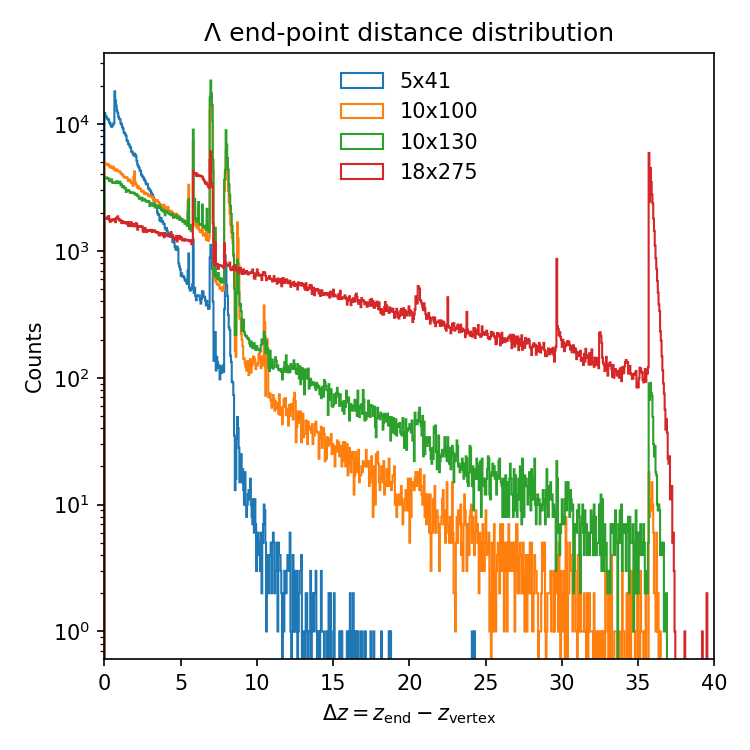
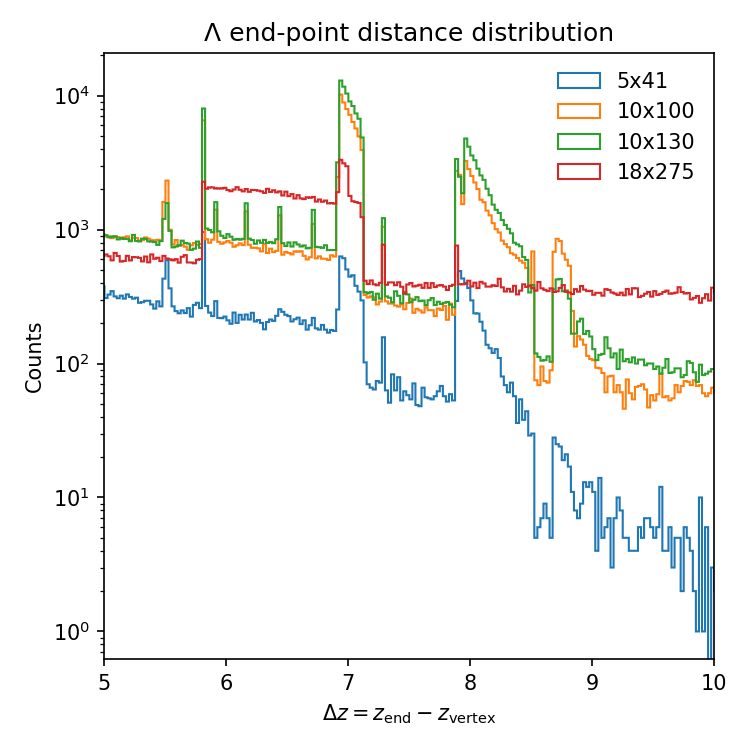
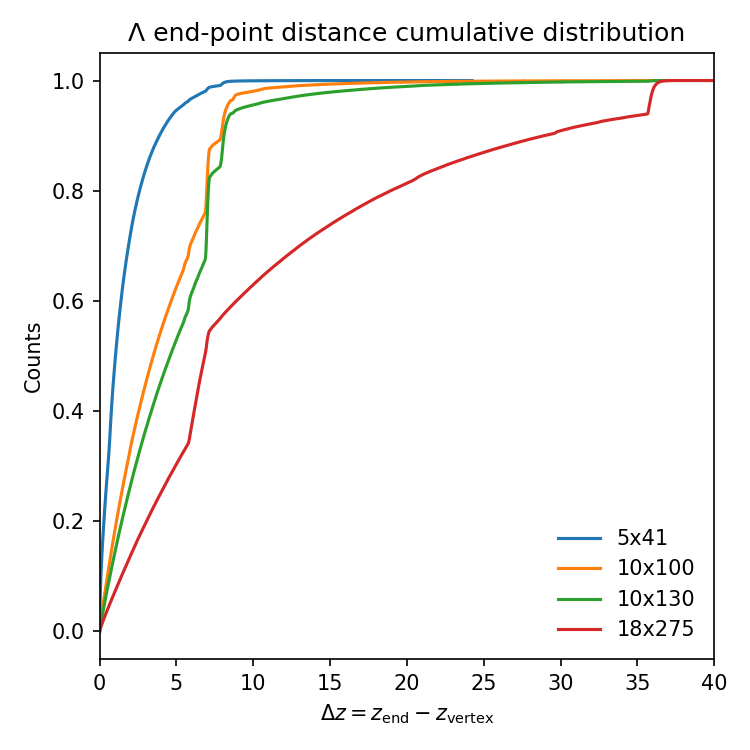
Momentum vs decay distance
| Beam | Distribution Plot |
|---|---|
| 5×41 | 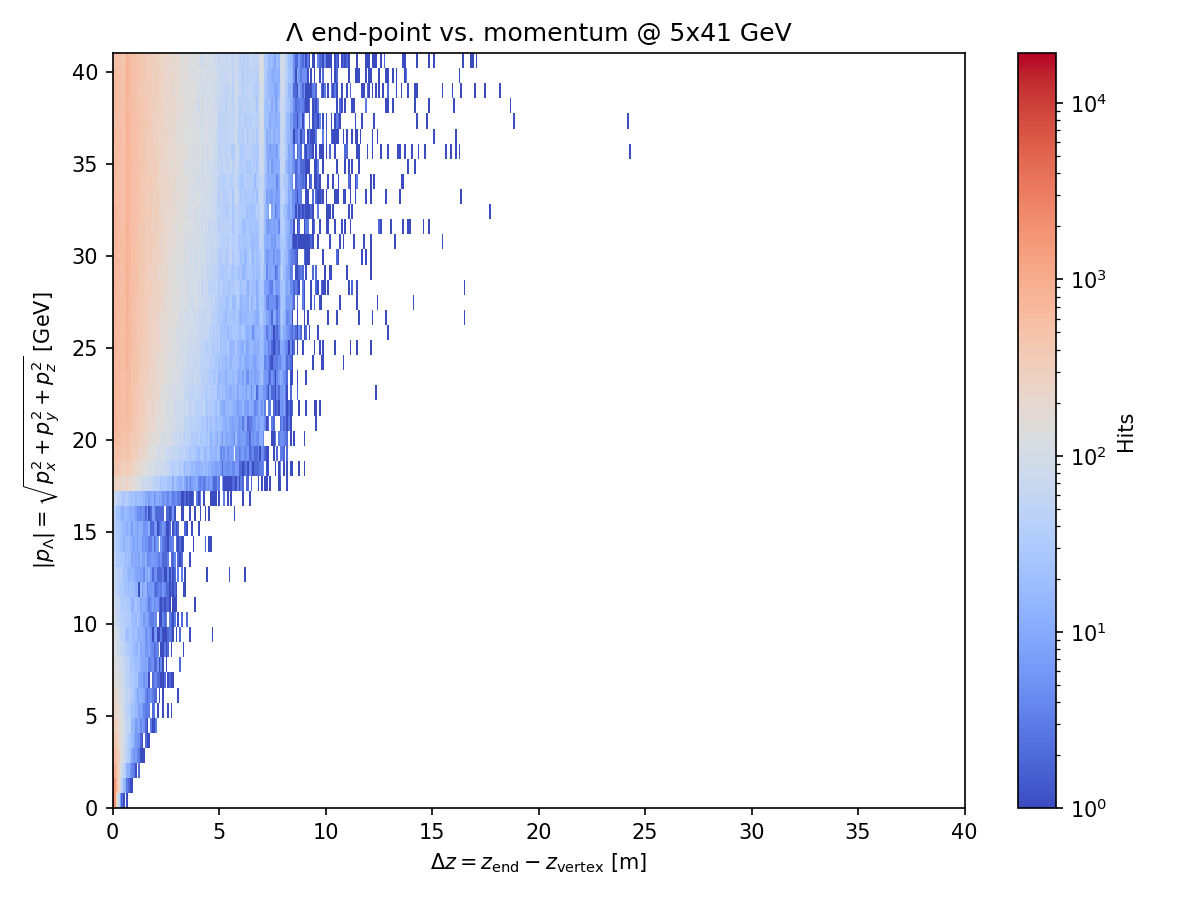 |
| 10×100 | 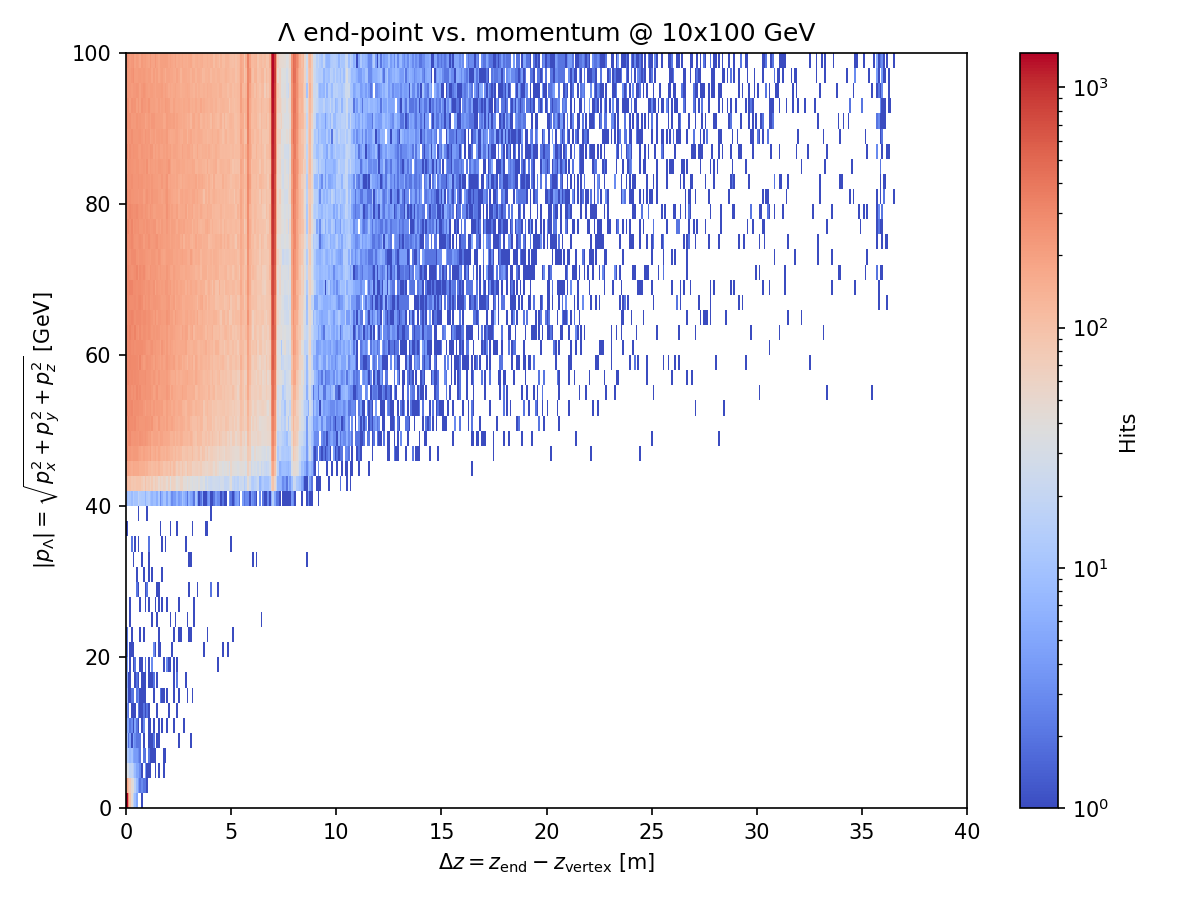 |
| 10×130 | 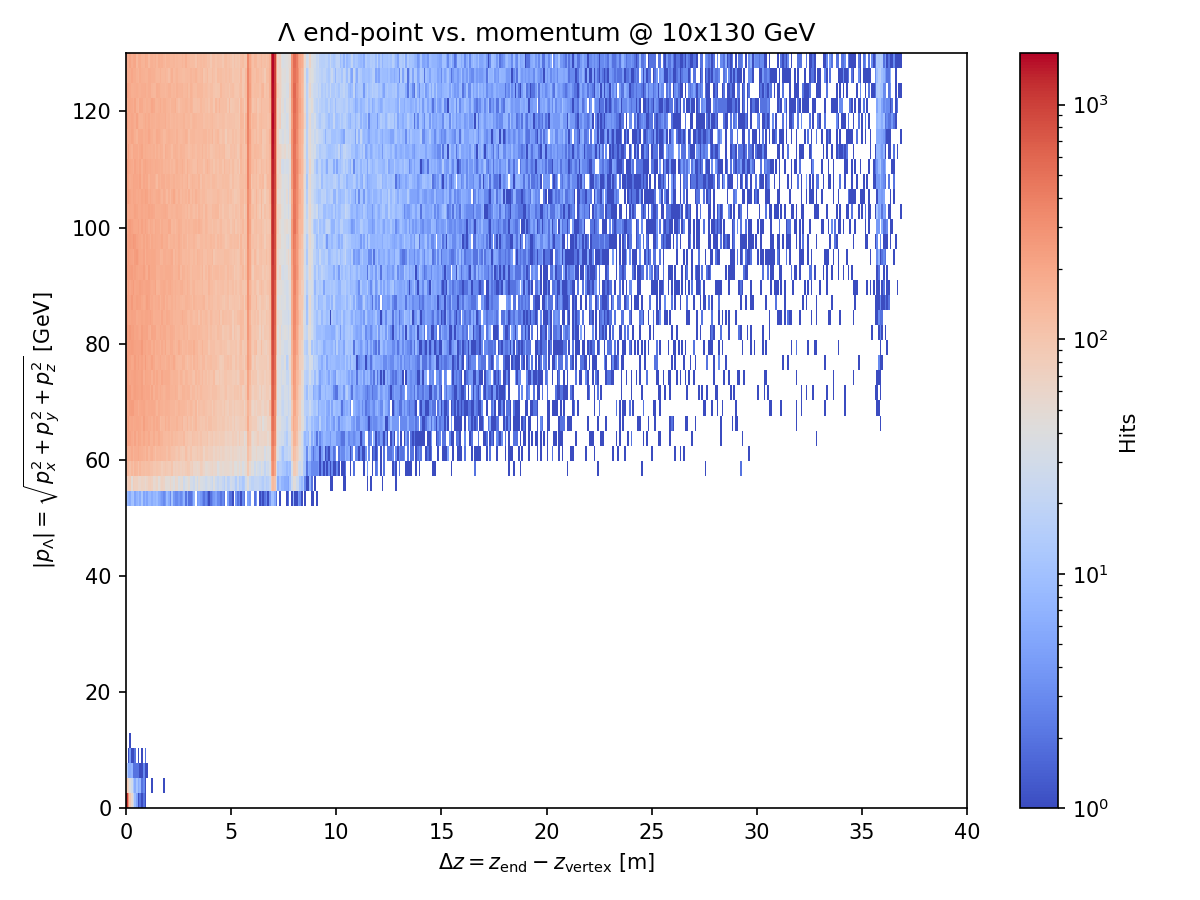 |
| 18×275 | 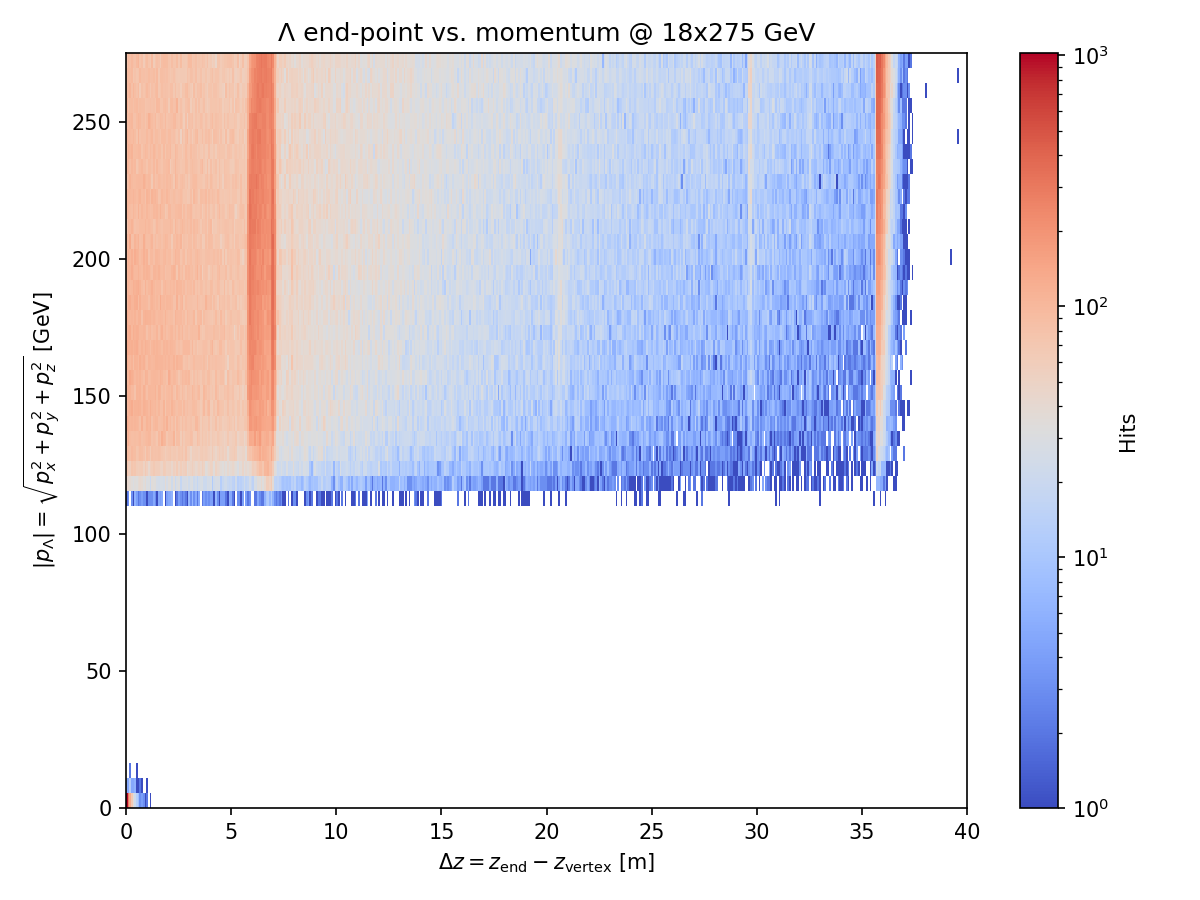 |
Lambda Decay Products
Lambda decay products (proton and π⁻)
Proton P vs Z endpoint
| Energy Configuration | Decay Distance Distribution |
|---|---|
| 5×41 GeV | 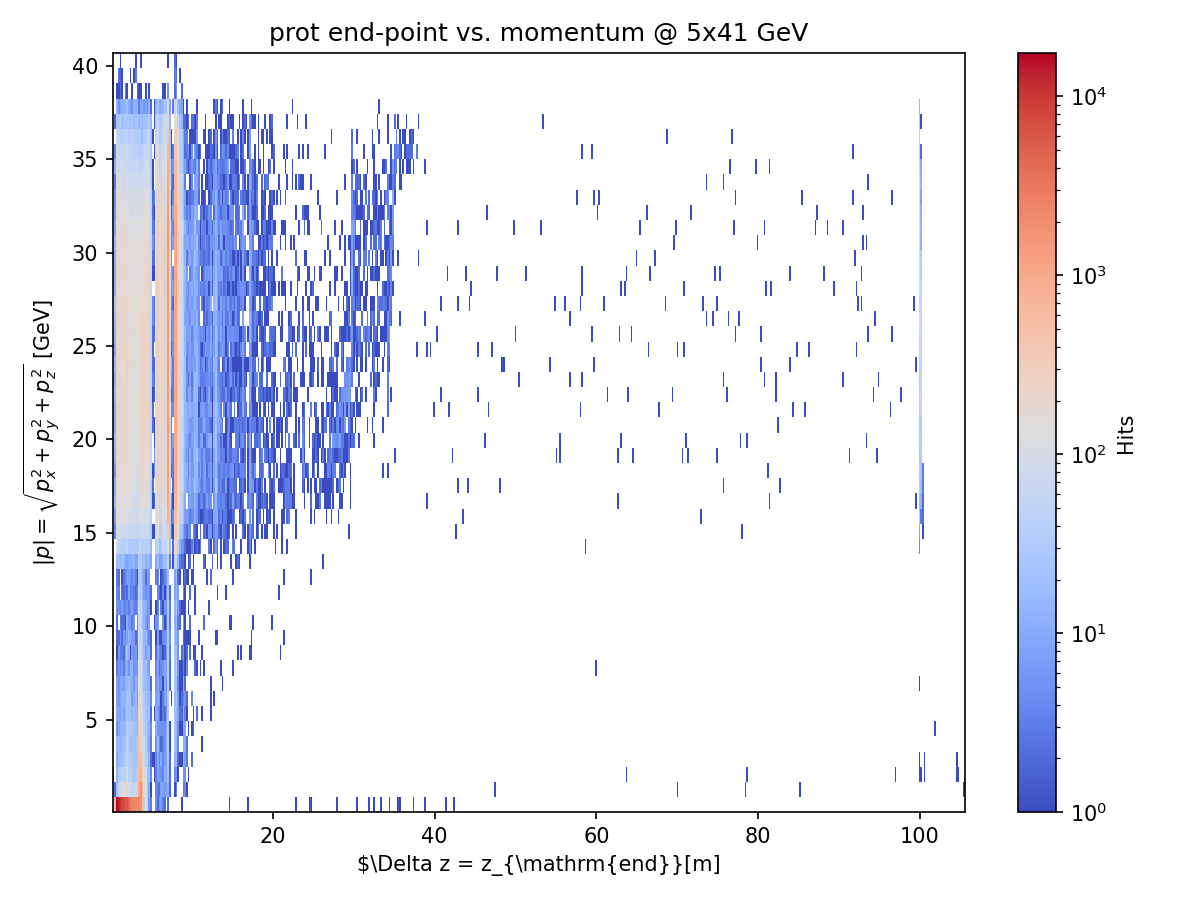 |
| 10×100 GeV | 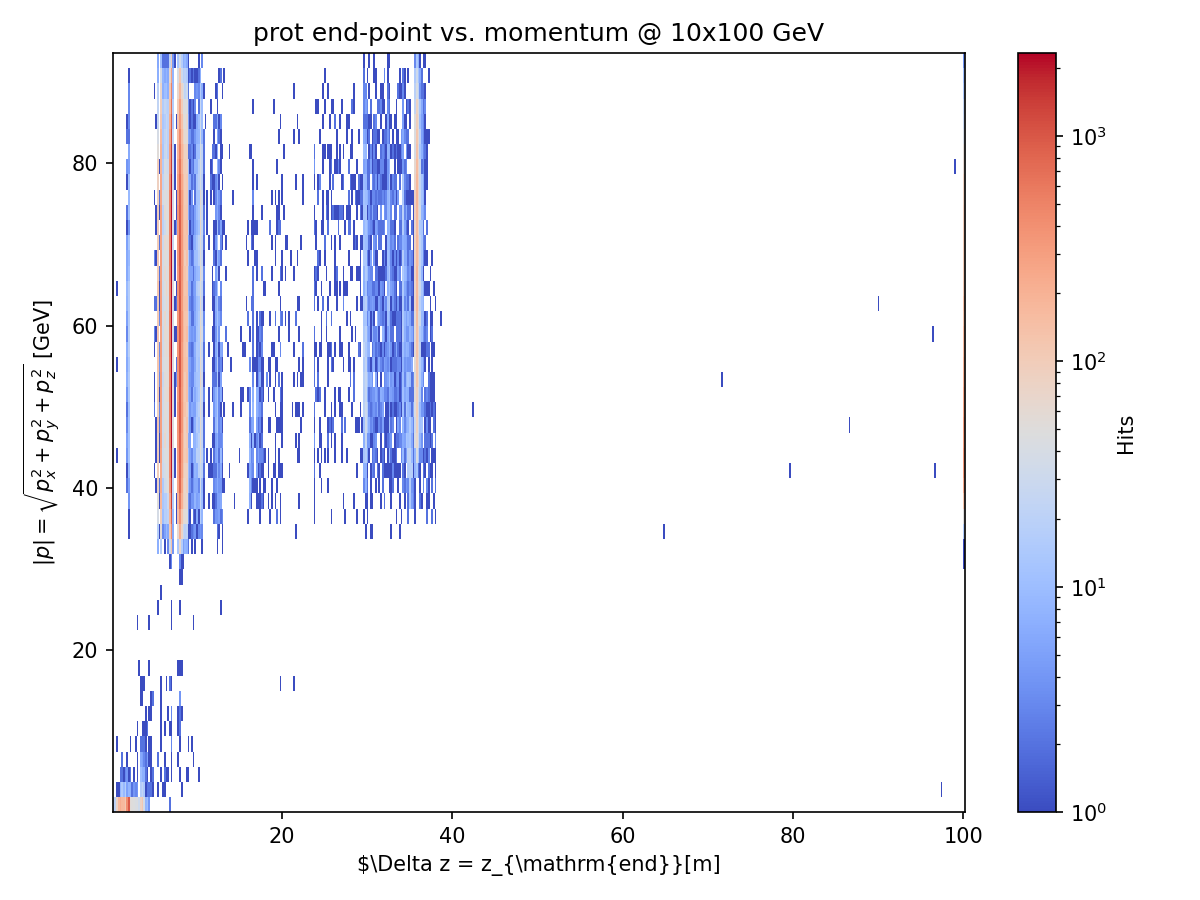 |
| 10×130 GeV | 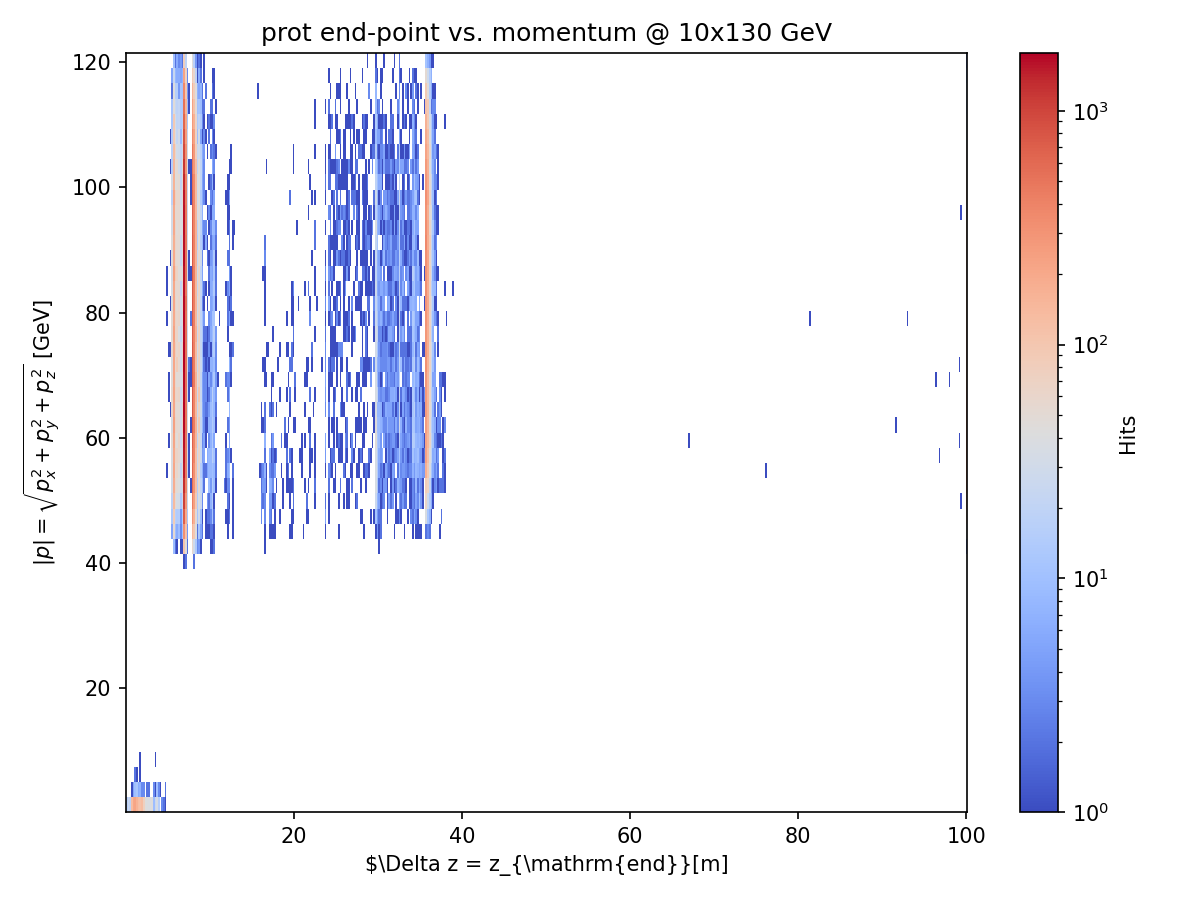 |
| 18×275 GeV | 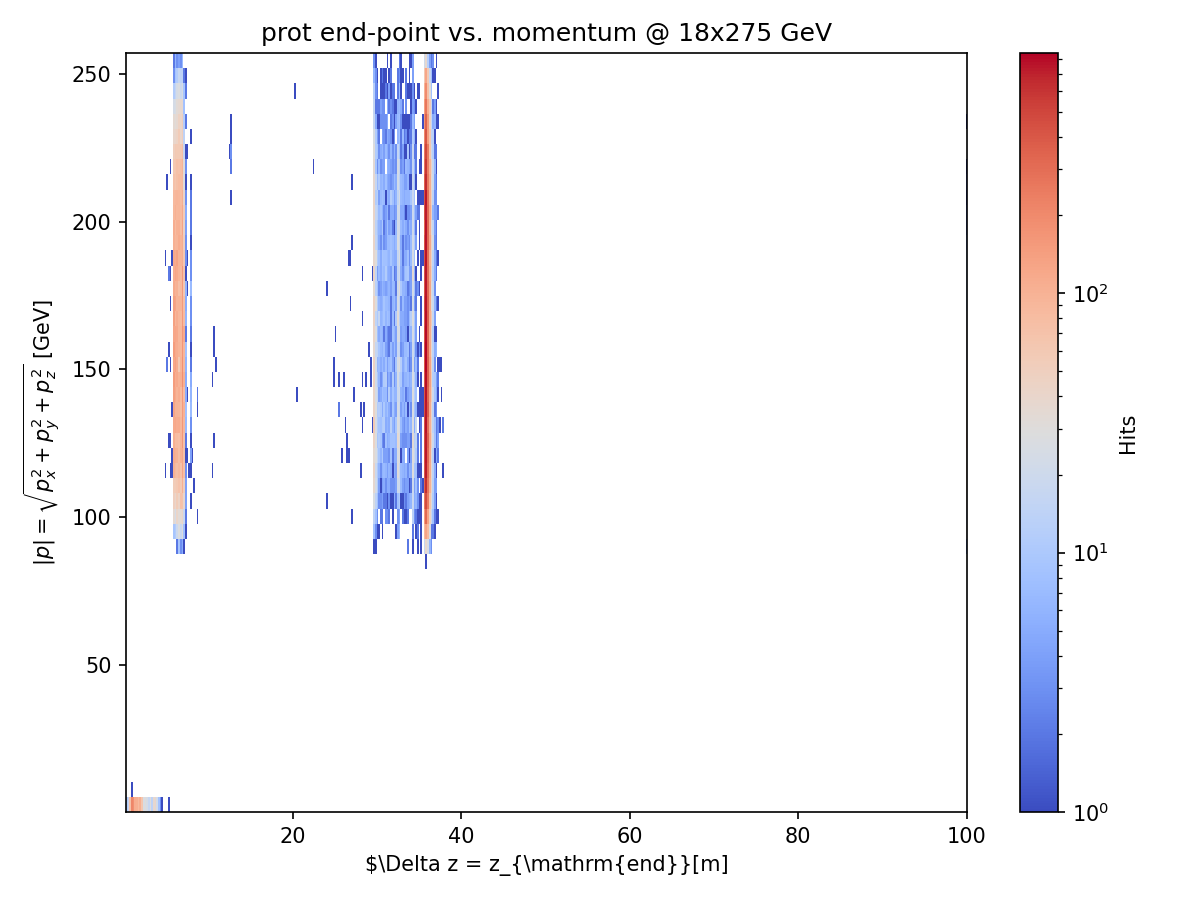 |
π⁻ P vs Z endpoint
The π⁻ from Lambda decay typically has lower momentum and a wider angular distribution compared to the proton.
| Energy Configuration | Decay Distance Distribution |
|---|---|
| 5×41 GeV | 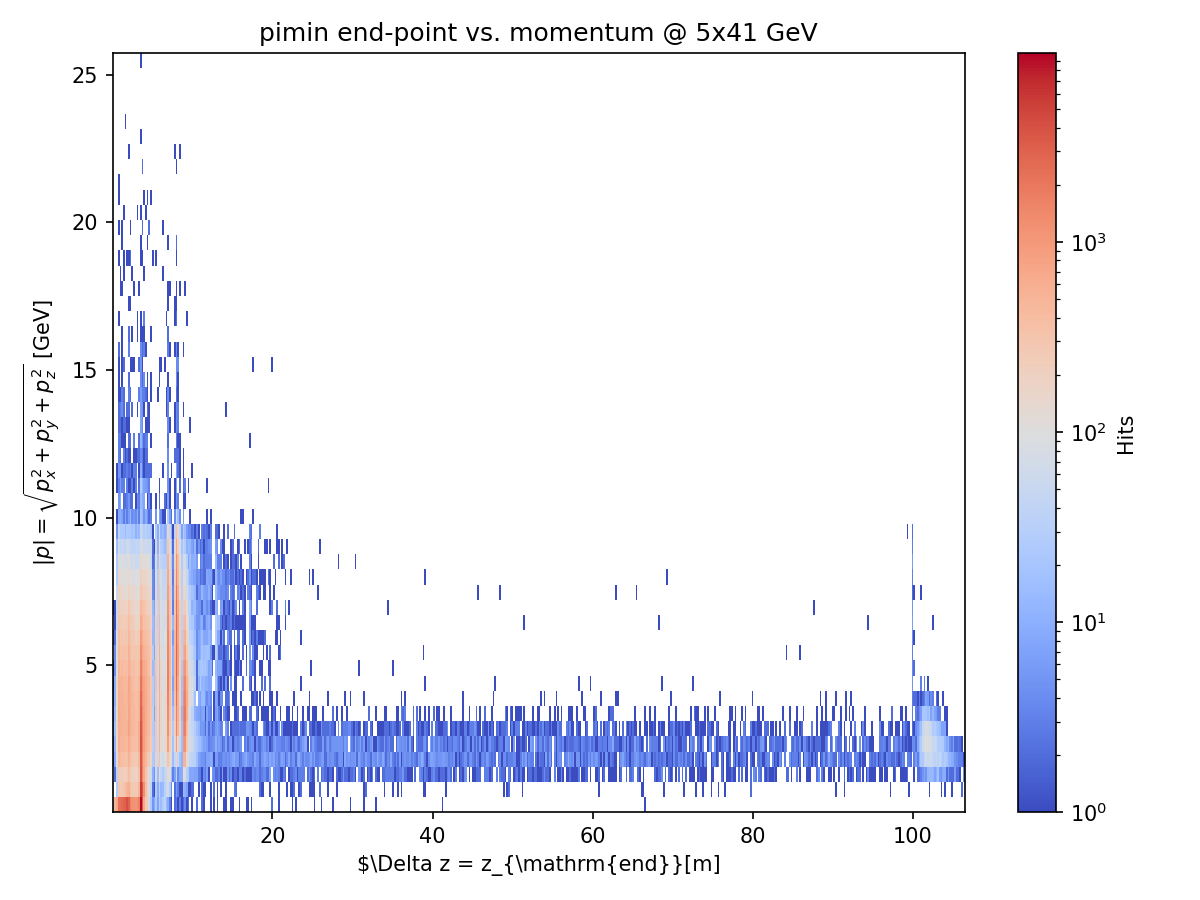 |
| 10×100 GeV | 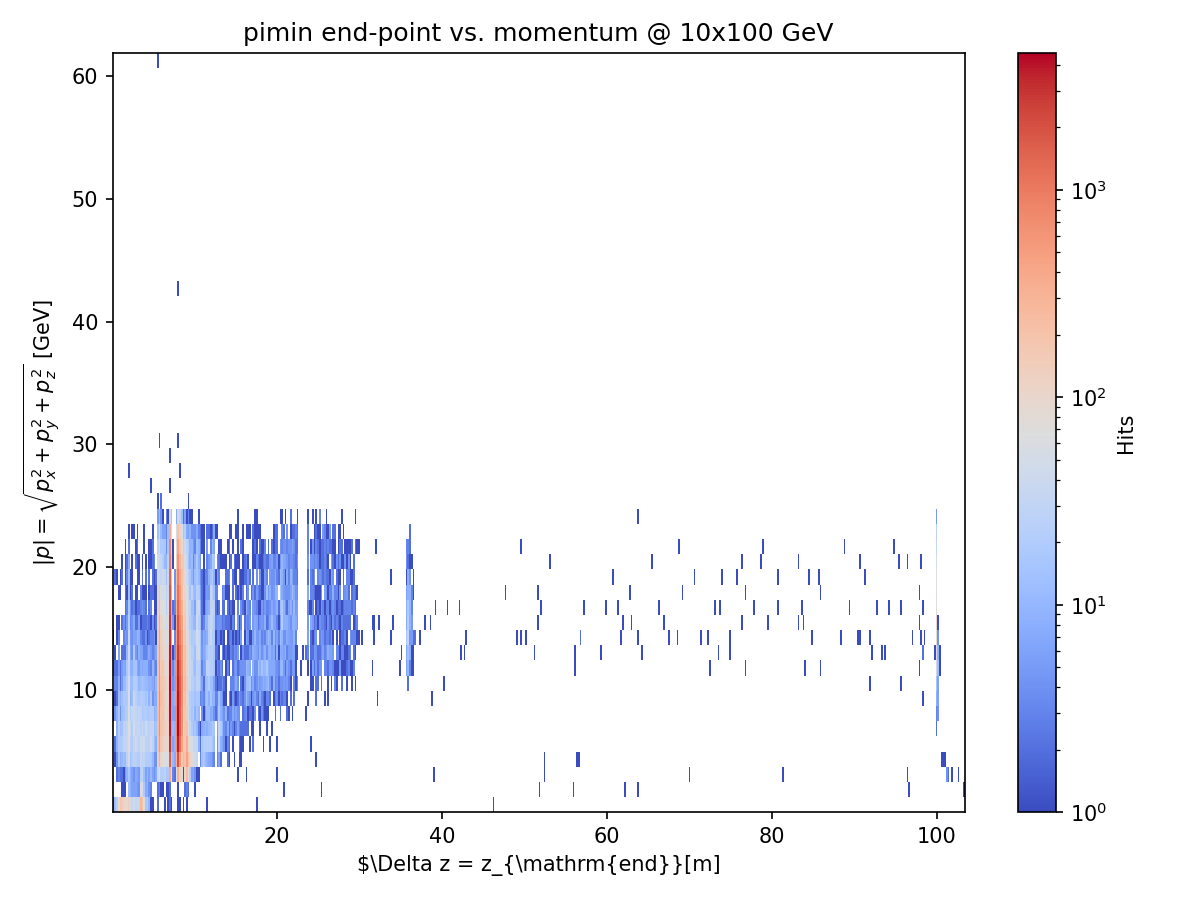 |
| 10×130 GeV | 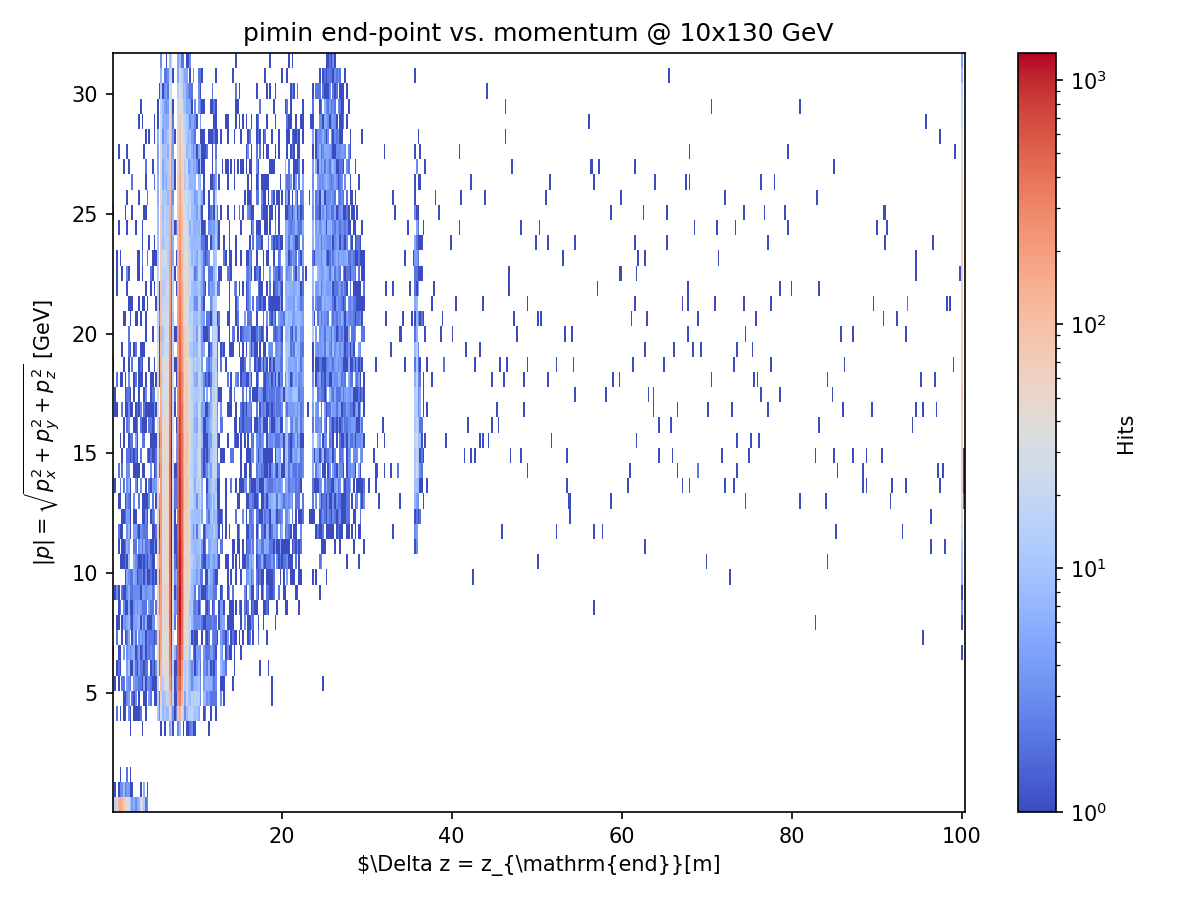 |
| 18×275 GeV | 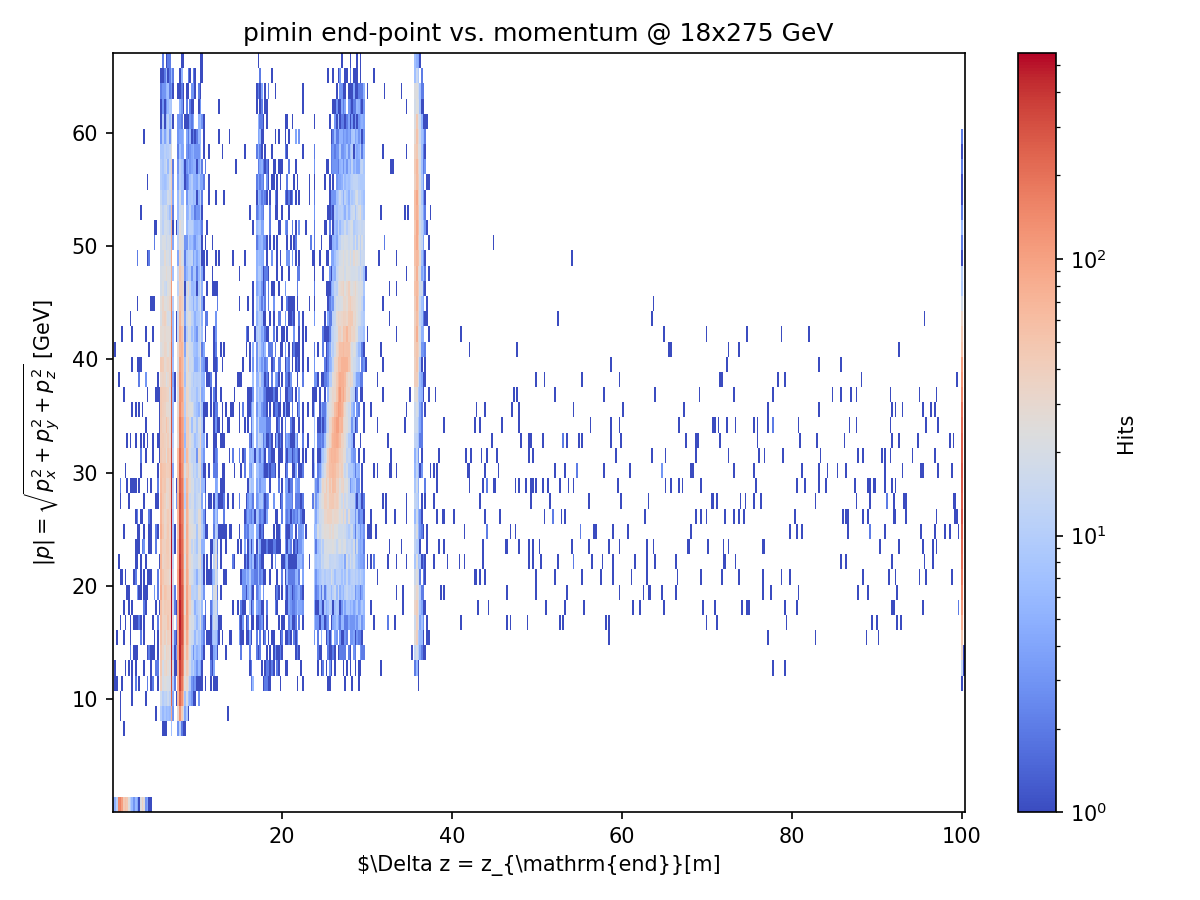 |
Neutron P vs Z decay distance
| Energy Configuration | Neutron Distribution |
|---|---|
| 5×41 GeV | 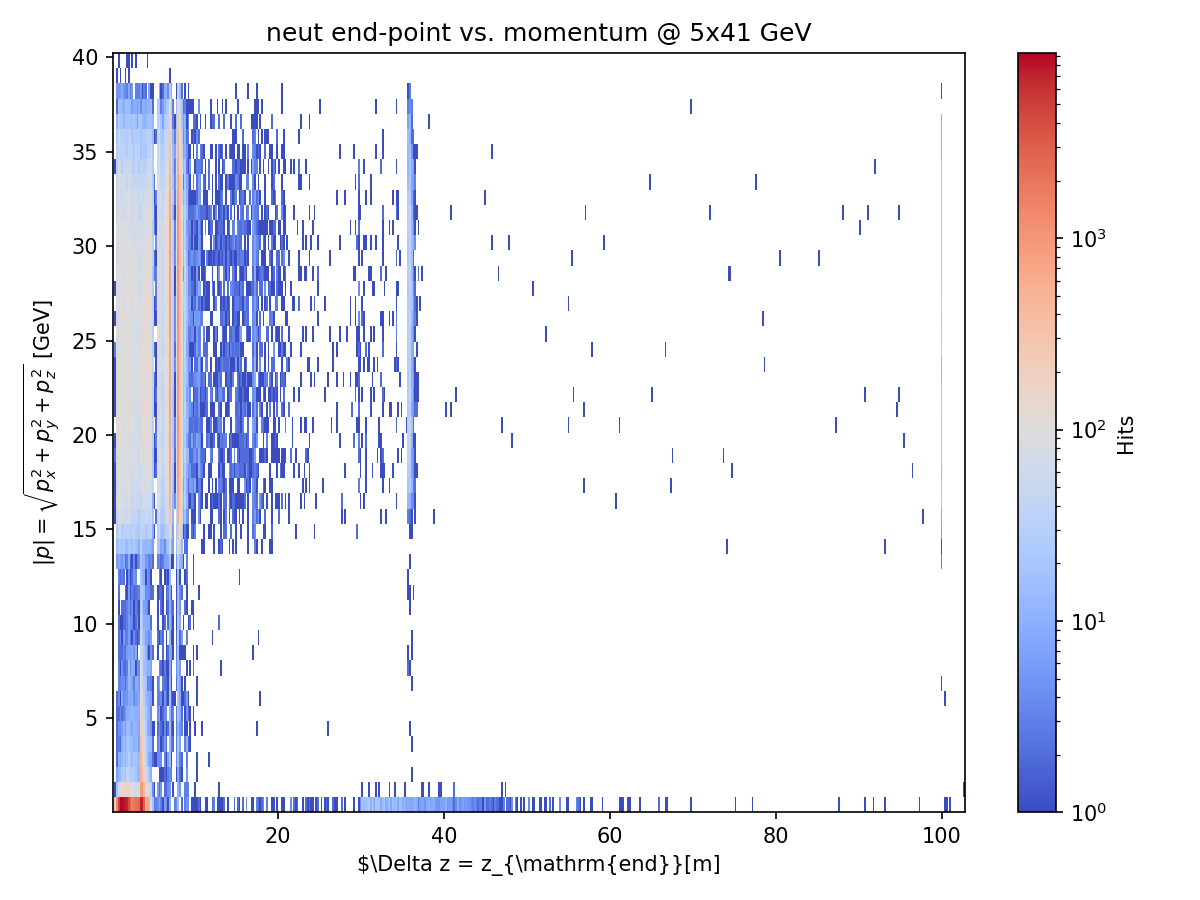 |
| 10×100 GeV | 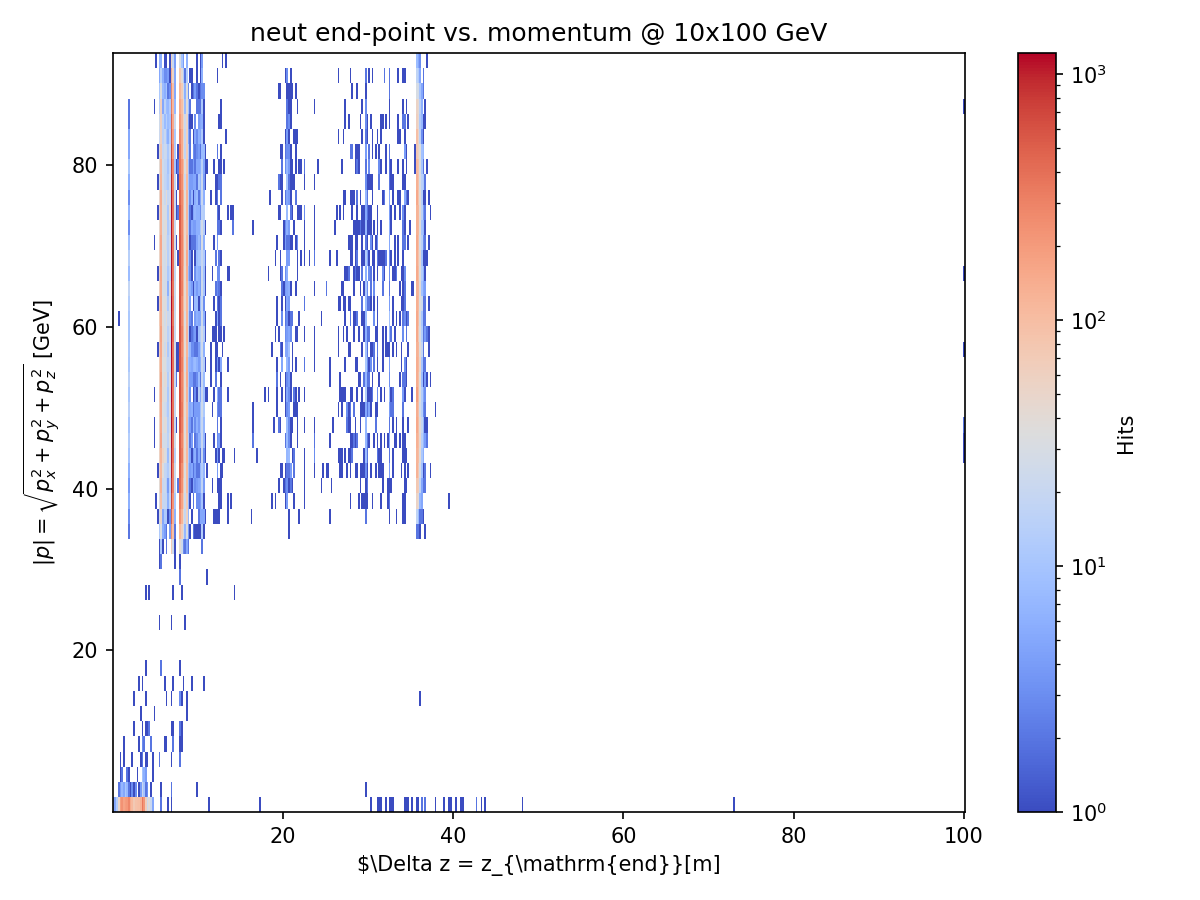 |
| 10×130 GeV | 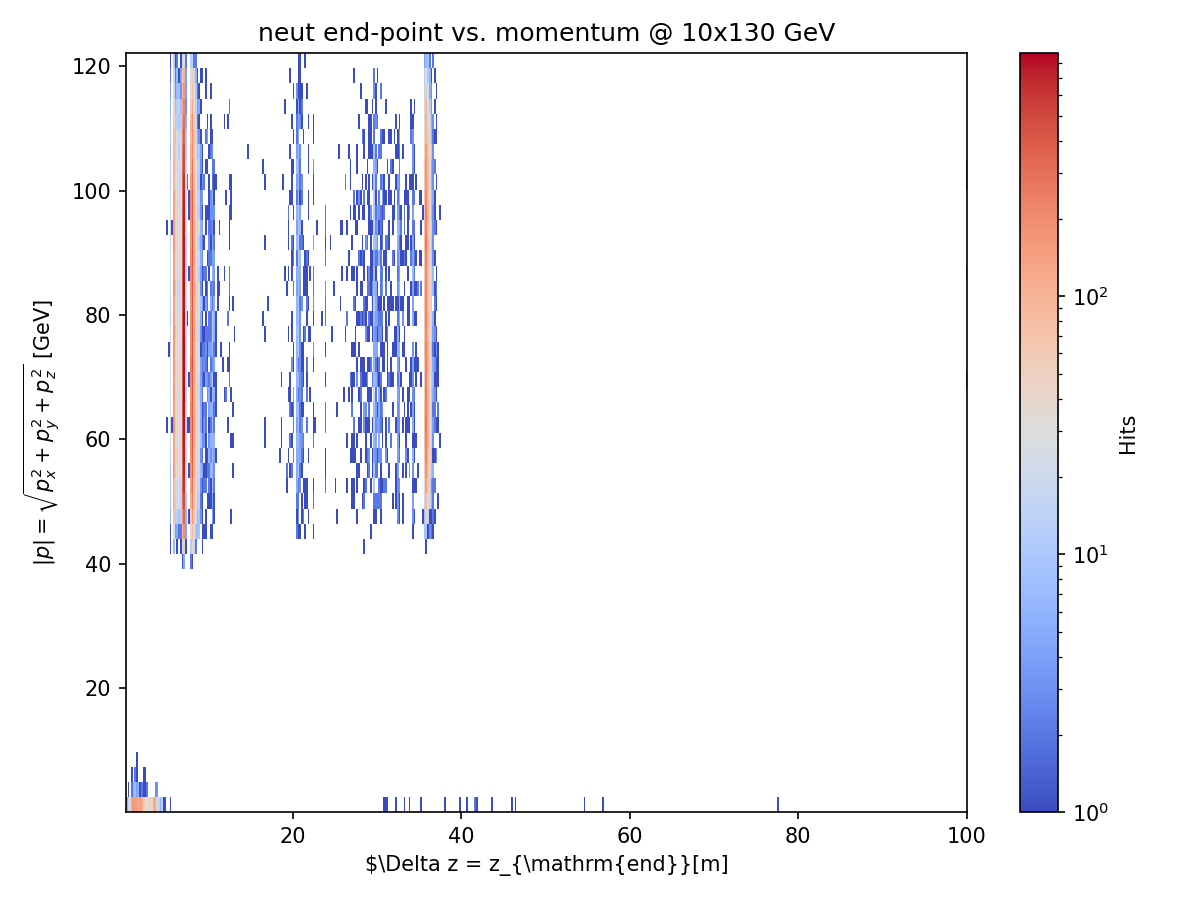 |
| 18×275 GeV | 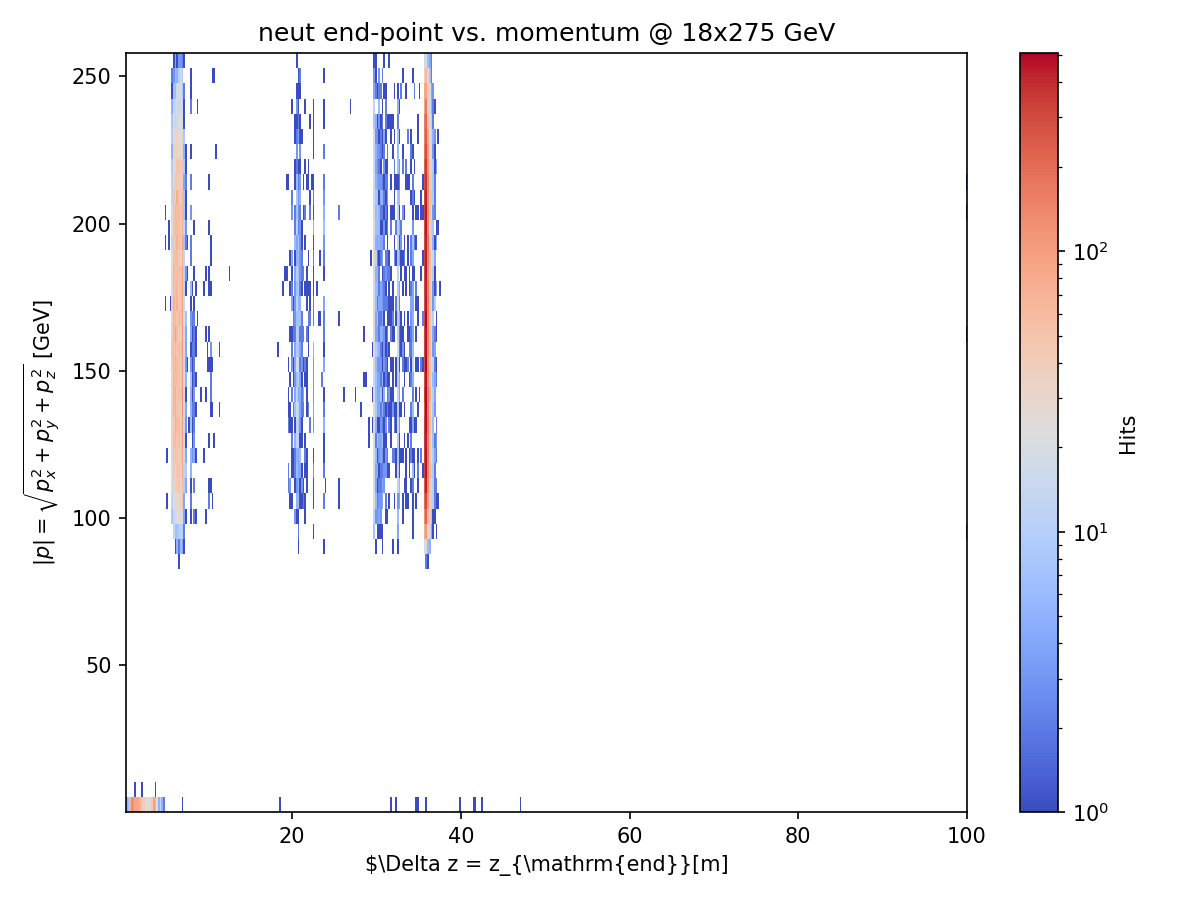 |
π⁰ P vs Z
Neutral pions may be produced in the fragmentation region or through resonance decays. Their detection relies on electromagnetic calorimetry.
| Energy Configuration | π⁰ Distribution |
|---|---|
| 5×41 GeV | 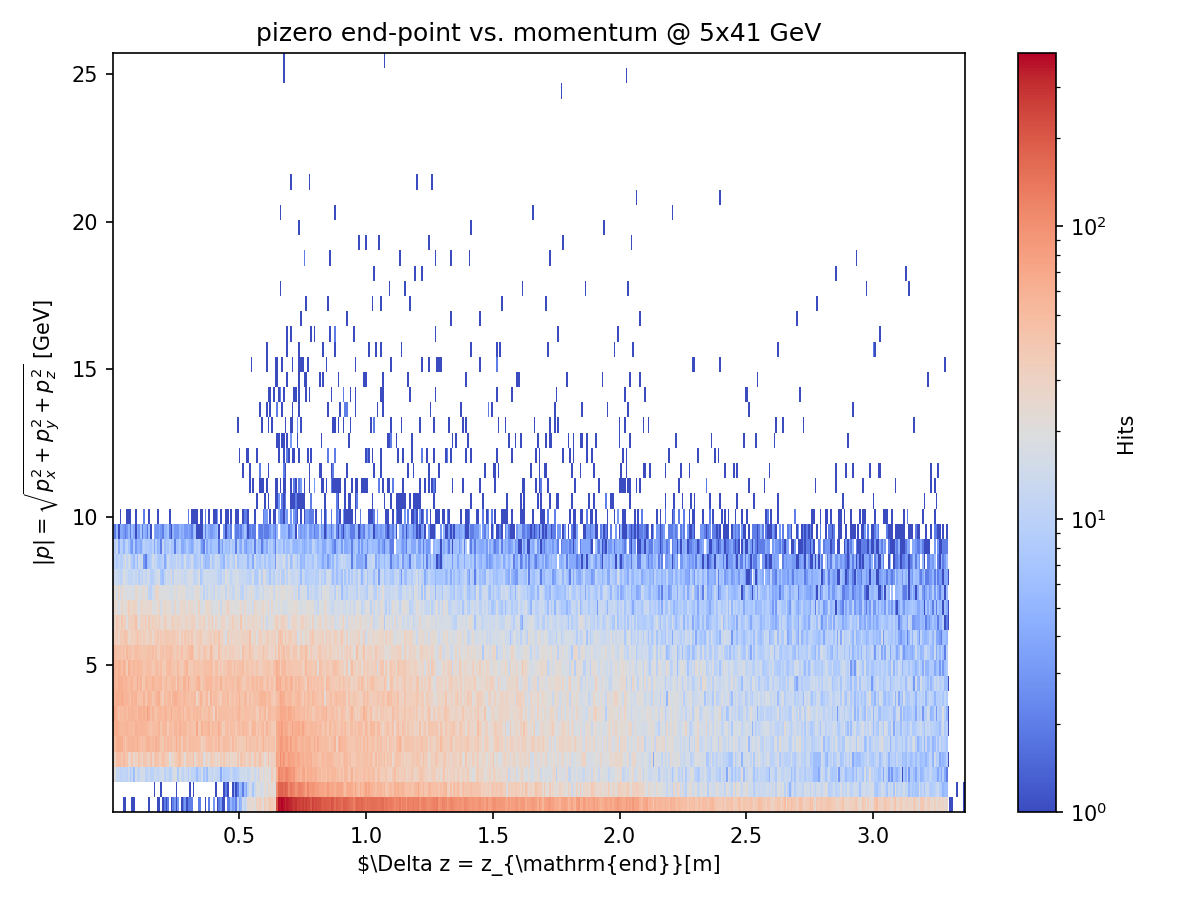 |
| 10×100 GeV | 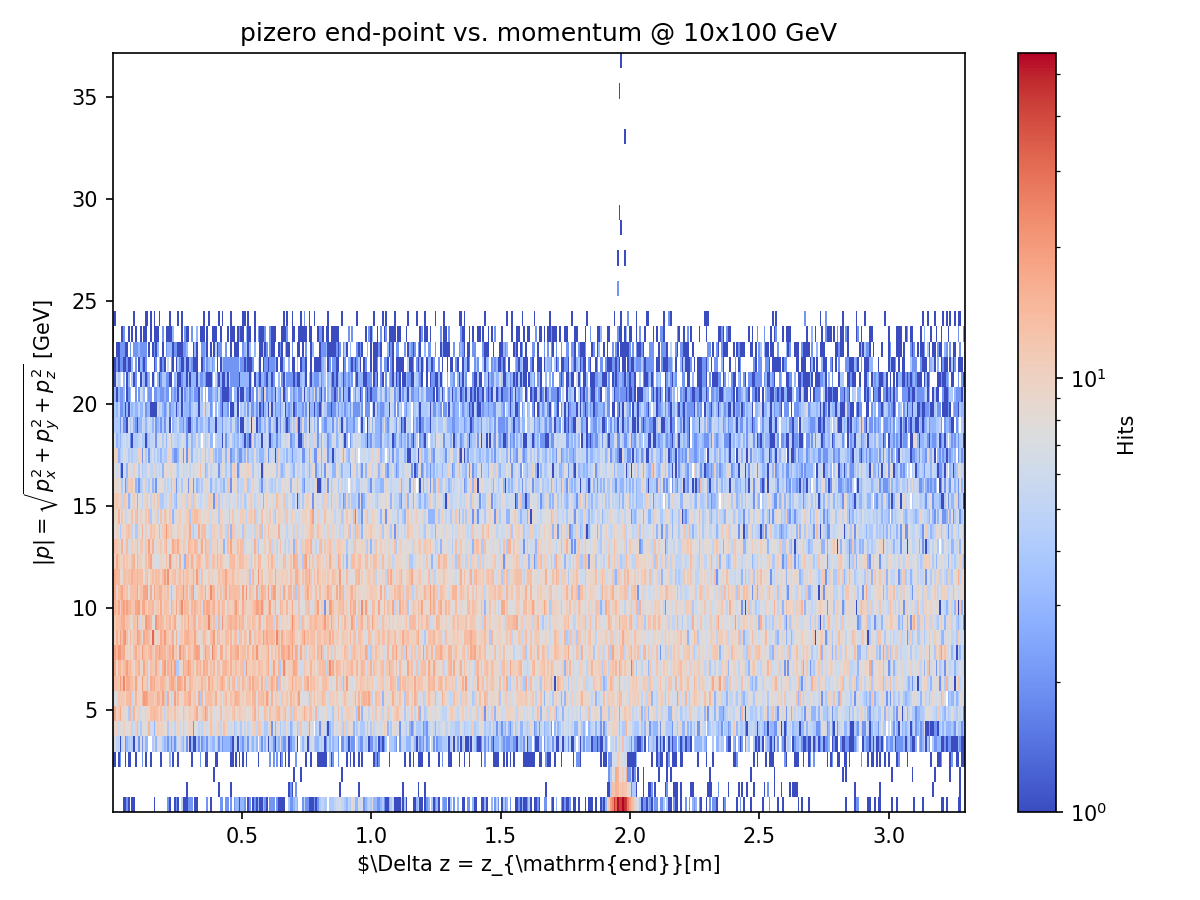 |
| 10×130 GeV | 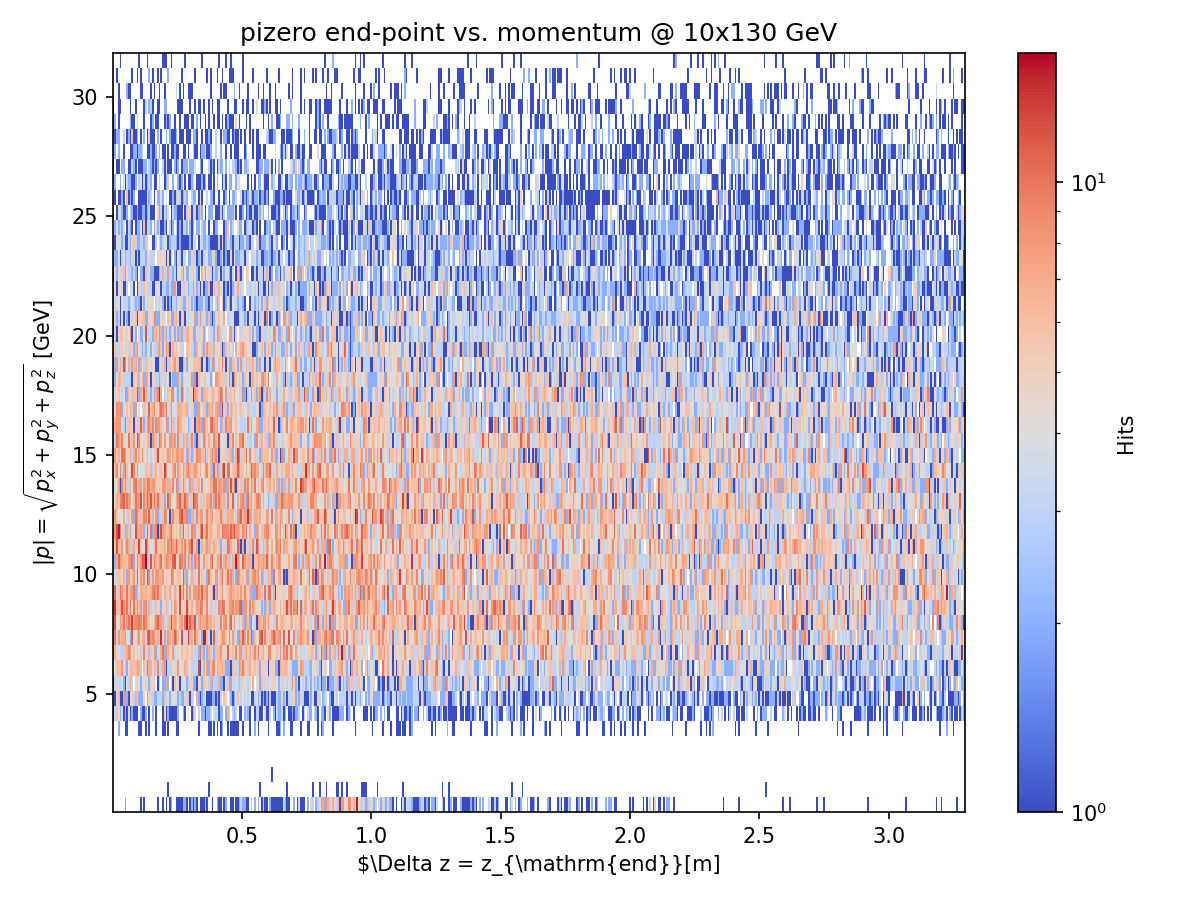 |
| 18×275 GeV | 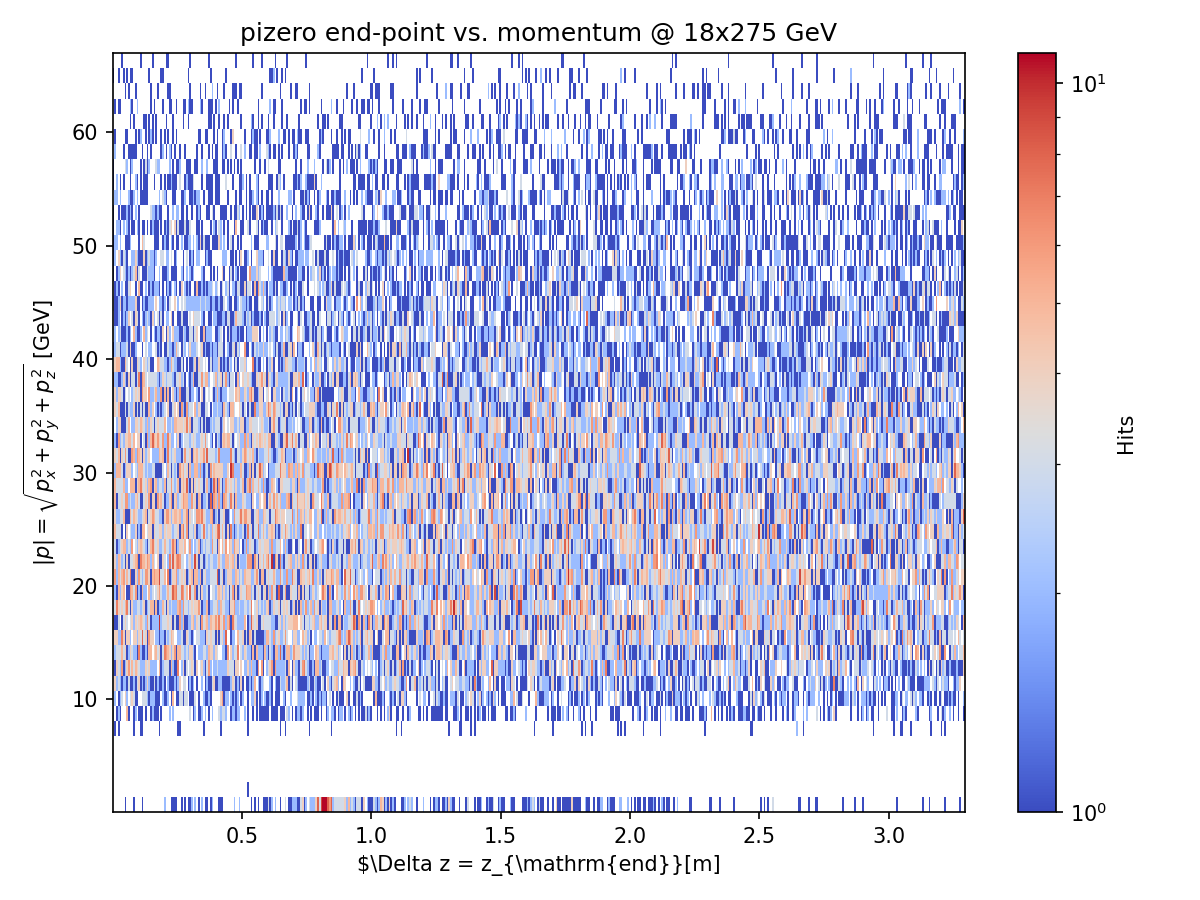 |
Detector-Specific Acceptance
The Far Forward region consists of multiple detector subsystems, each optimized for specific particle types and kinematic ranges. The following sections show polar acceptance plots for different particles in various detector components. These plots display the angular distribution of particle hits in a polar coordinate representation, providing insight into the geometric acceptance of each subsystem.
B0 Tracker
The B0 tracker provides tracking coverage close to the beam pipe in the forward direction, essential for detecting high-momentum particles at small angles.
| Energy Configuration | Polar Acceptance |
|---|---|
| 5×41 GeV | |
| 10×100 GeV | |
| 18×275 GeV |
Forward Off-Momentum Tracker
The Forward Off-Momentum (OMD) tracker system captures particles scattered at small angles, including protons from Lambda decays that are slightly deflected from the beam direction.
| Energy Configuration | Polar Acceptance |
|---|---|
| 5×41 GeV | |
| 10×100 GeV | |
| 18×275 GeV |
Forward Roman Pot
The Roman Pot detectors are specialized tracking stations positioned very close to the beam line, designed to detect forward protons at extremely small scattering angles.
| Energy Configuration | Polar Acceptance |
|---|---|
| 5×41 GeV | 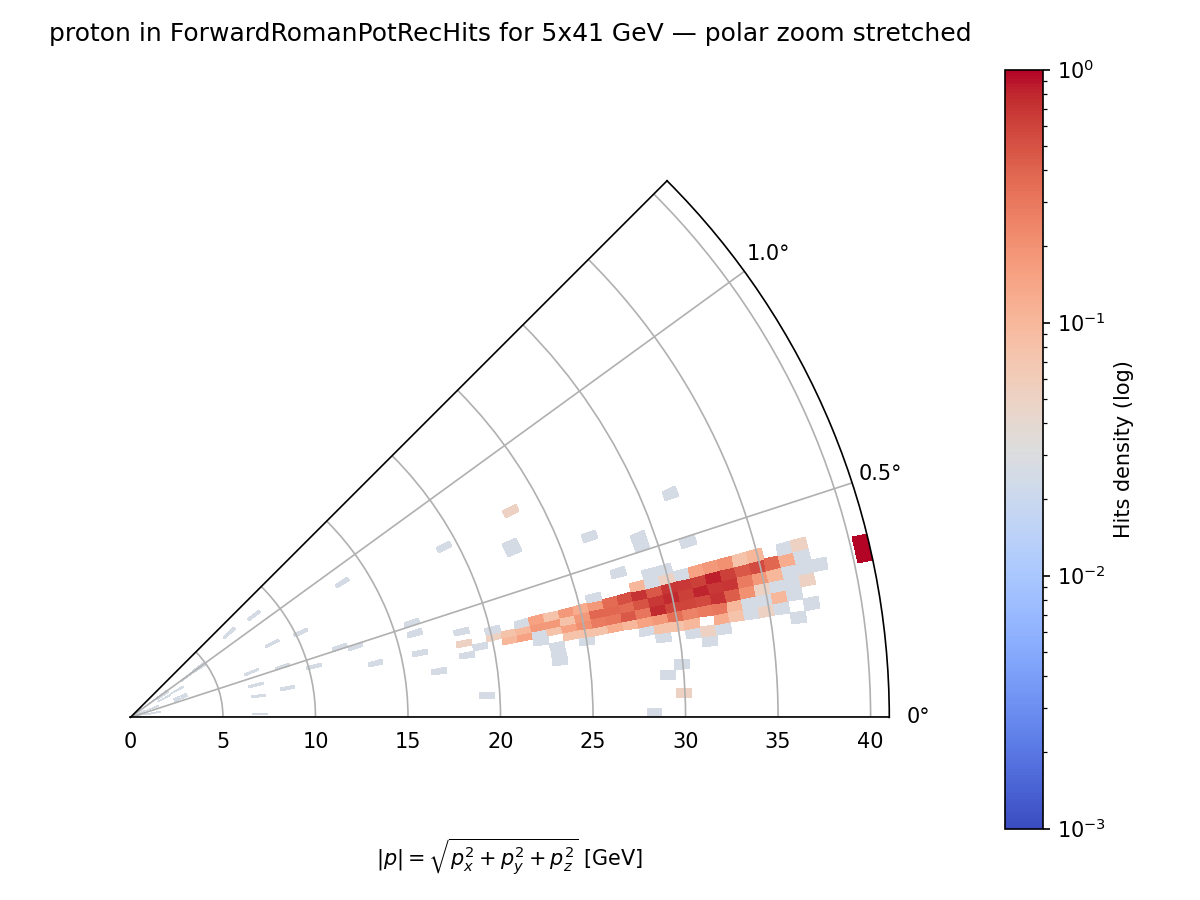 |
| 10×100 GeV | 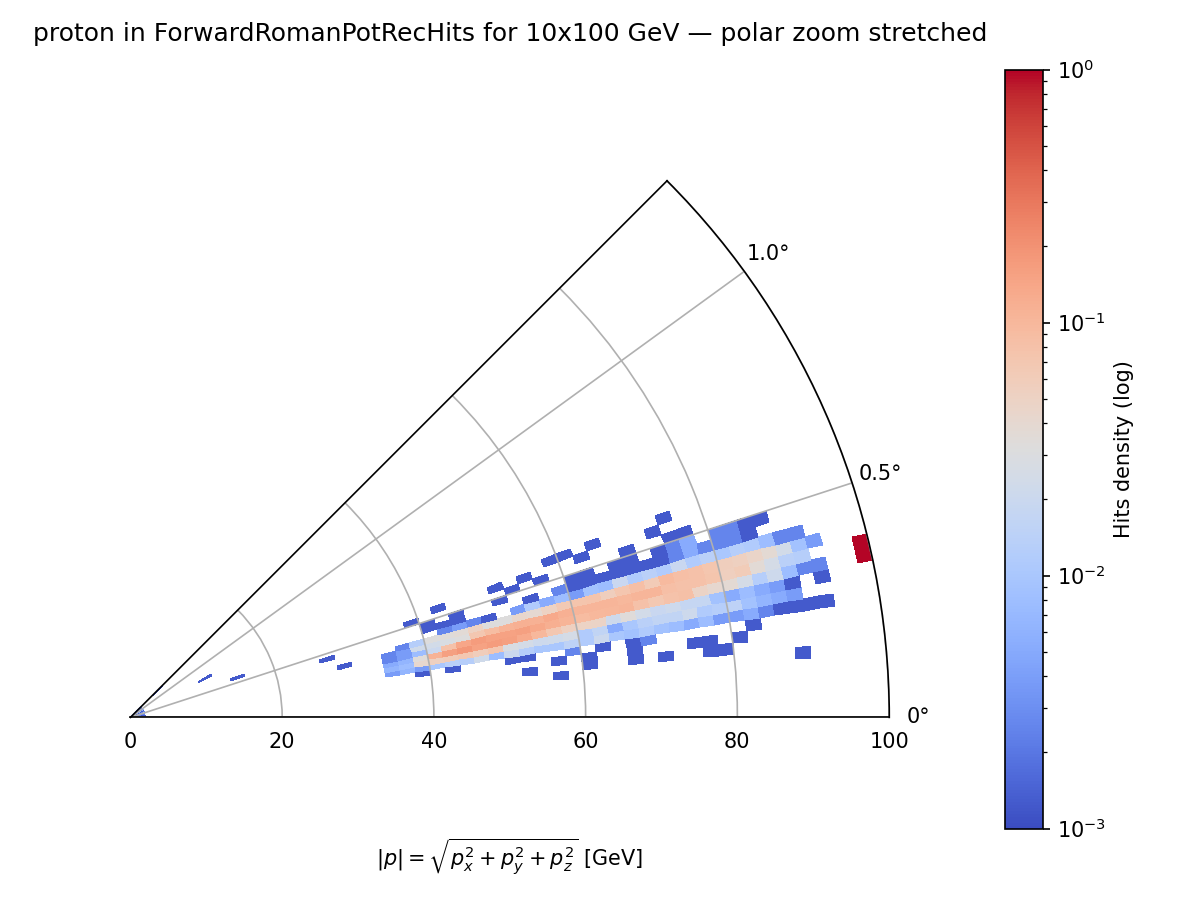 |
| 18×275 GeV | 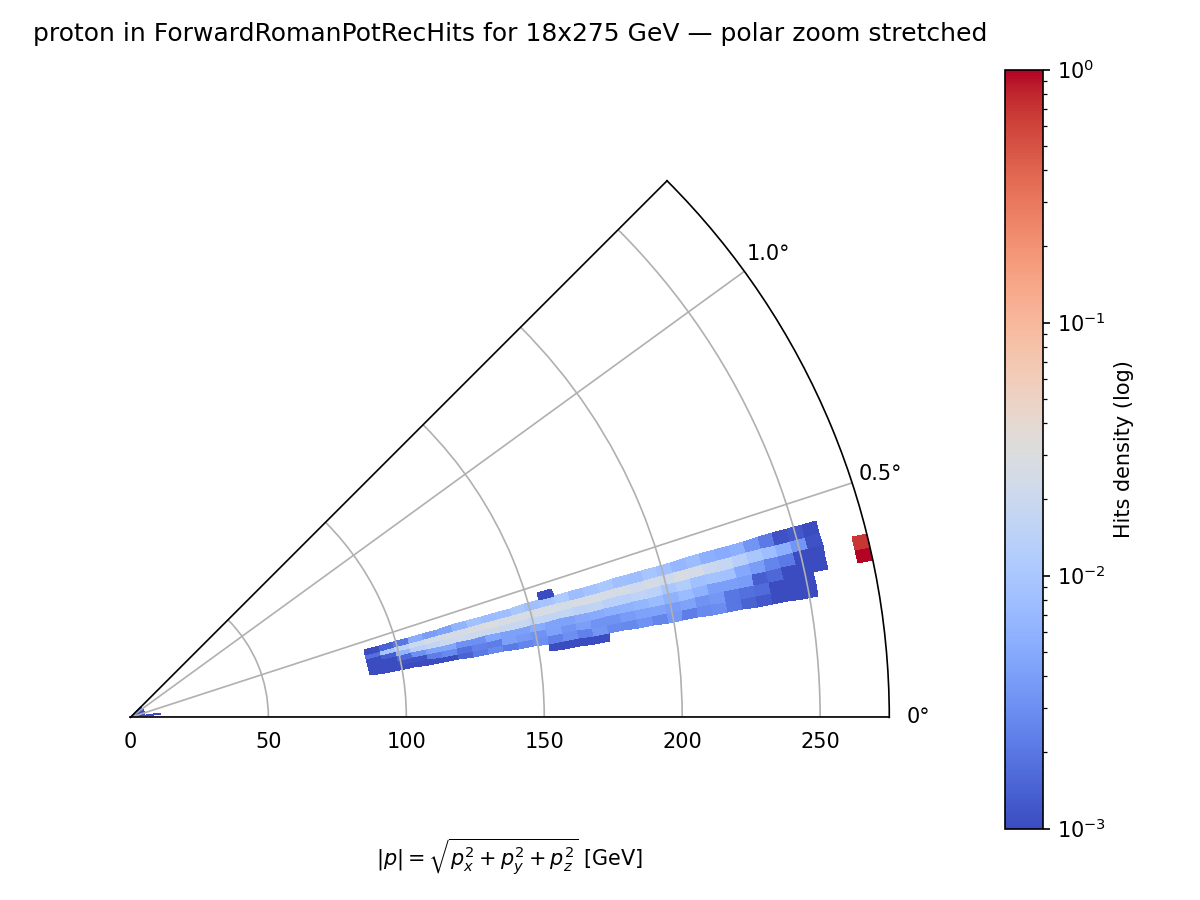 |
Charged Pion Detection
Charged pions from Lambda decay and other sources are detected in the B0 and OMD tracking systems. Both π⁺ and π⁻ are important for understanding the reaction kinematics and backgrounds.
Pion⁺ in B0 Tracker
| Energy Configuration | Polar Acceptance |
|---|---|
| 5×41 GeV | |
| 10×100 GeV | |
| 18×275 GeV |
Pion⁺ in Forward Off-Momentum Tracker
| Energy Configuration | Polar Acceptance |
|---|---|
| 5×41 GeV | |
| 10×100 GeV | |
| 18×275 GeV |
Pion⁻ in Forward Off-Momentum Tracker
The π⁻ from Lambda decay (Λ → p + π⁻) is a critical component for Lambda reconstruction.
| Energy Configuration | Polar Acceptance |
|---|---|
| 5×41 GeV | |
| 10×100 GeV | |
| 18×275 GeV |
Pion Tracking Observations:
- Pions typically have wider angular distributions than protons from Lambda decays
- The combination of B0 and OMD provides comprehensive coverage
- Charge sign determination is essential for distinguishing π⁺ from π⁻
- Lower momentum pions are more affected by magnetic field deflection
Neutral Particle Detection
Neutral particles (neutrons and π⁰) are detected in calorimetric systems, with the ZDC playing a crucial role for very forward particles.
Neutron Detection in Far Forward ZDC
The hadronic Zero Degree Calorimeter (HCal ZDC) is optimized for neutron detection at very small angles.
| Energy Configuration | Polar Acceptance |
|---|---|
| 5×41 GeV | 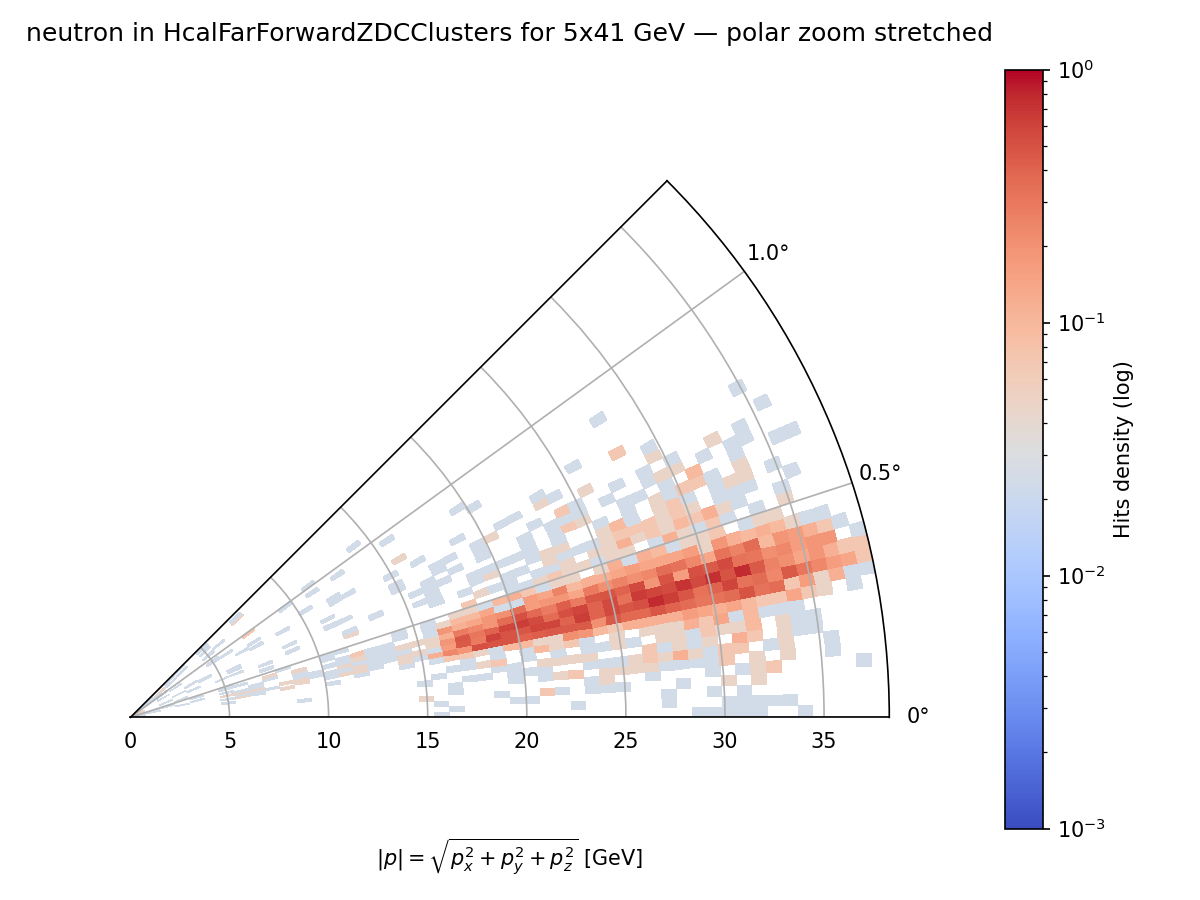 |
| 10×100 GeV | 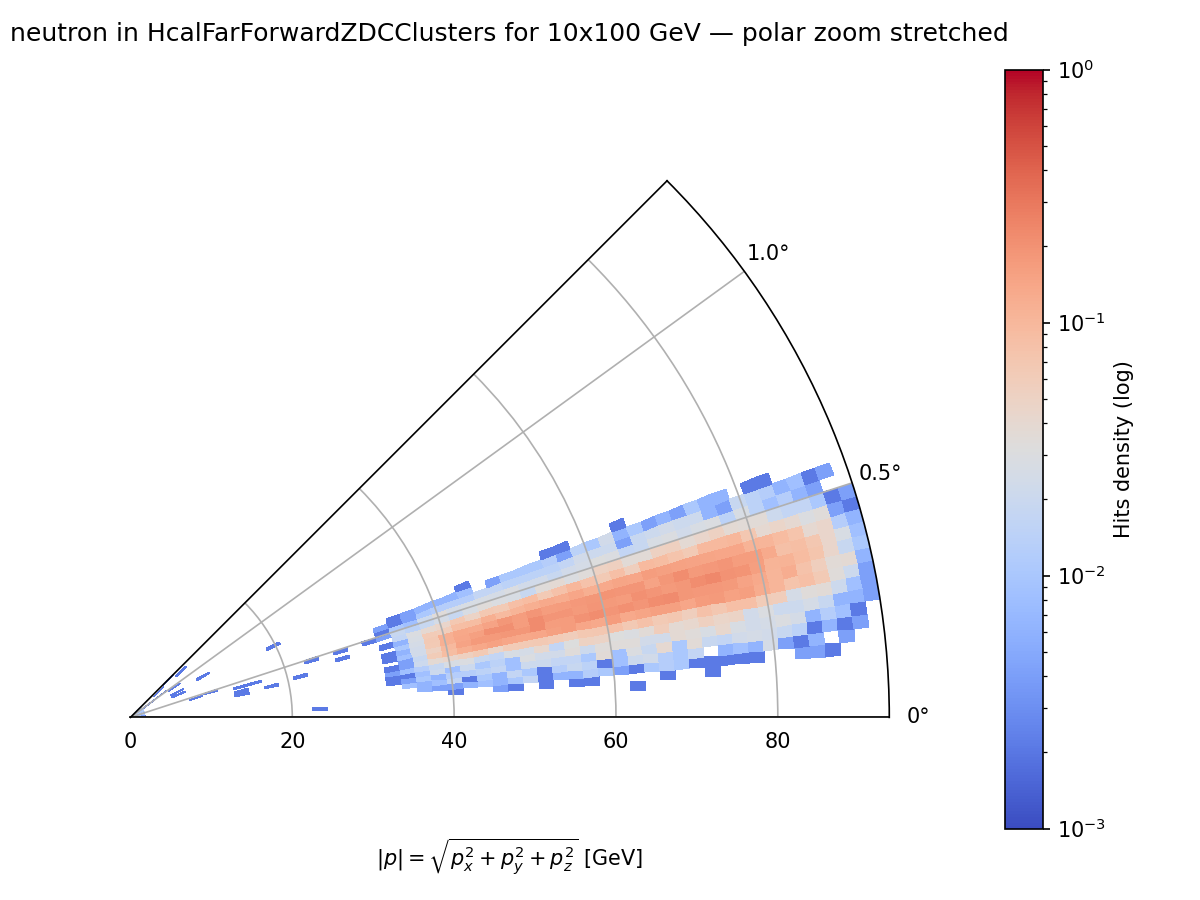 |
| 18×275 GeV | 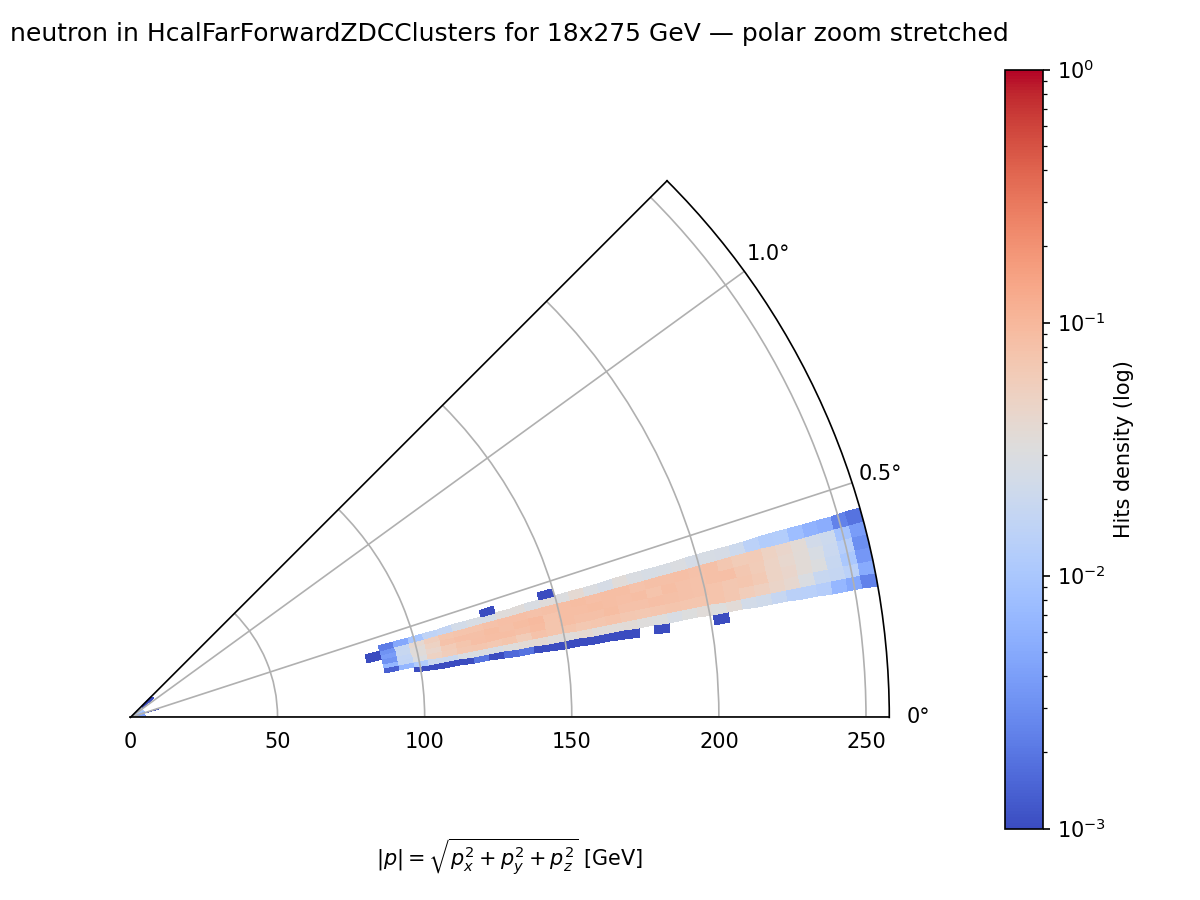 |
π⁰ Detection
Neutral pions are reconstructed through their two-photon decay (π⁰ → γγ) using electromagnetic calorimetry.
π⁰ in B0 ECal:
| Energy Configuration | Polar Acceptance |
|---|---|
| 5×41 GeV | 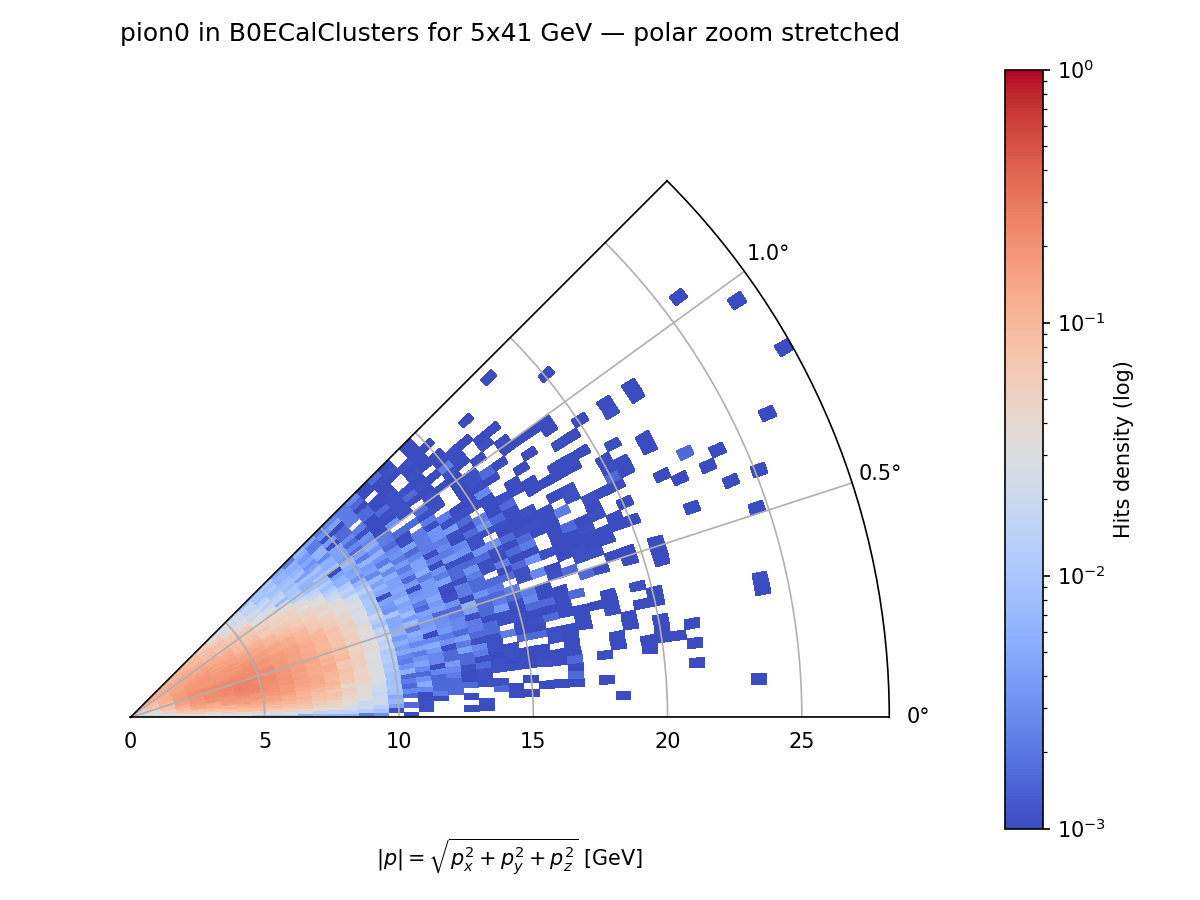 |
| 10×100 GeV | 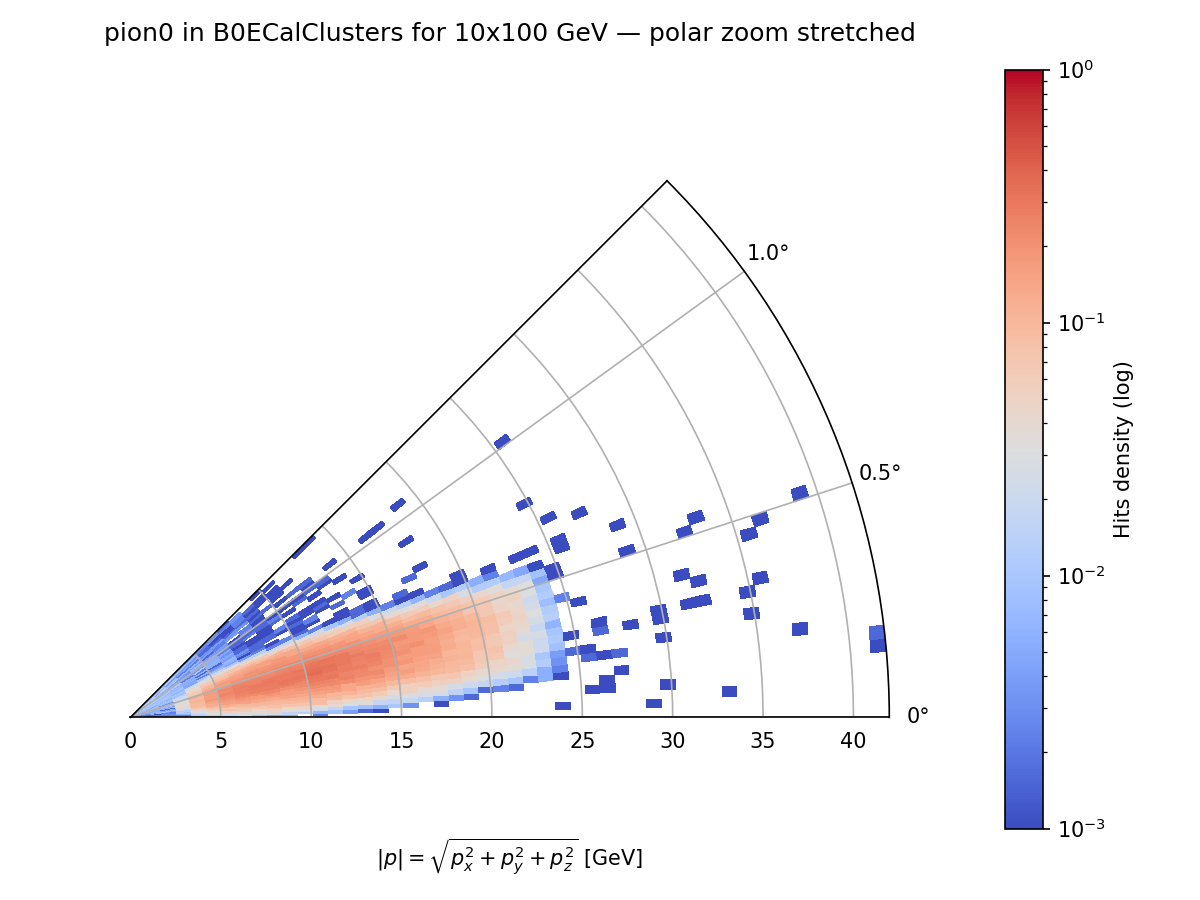 |
| 18×275 GeV | 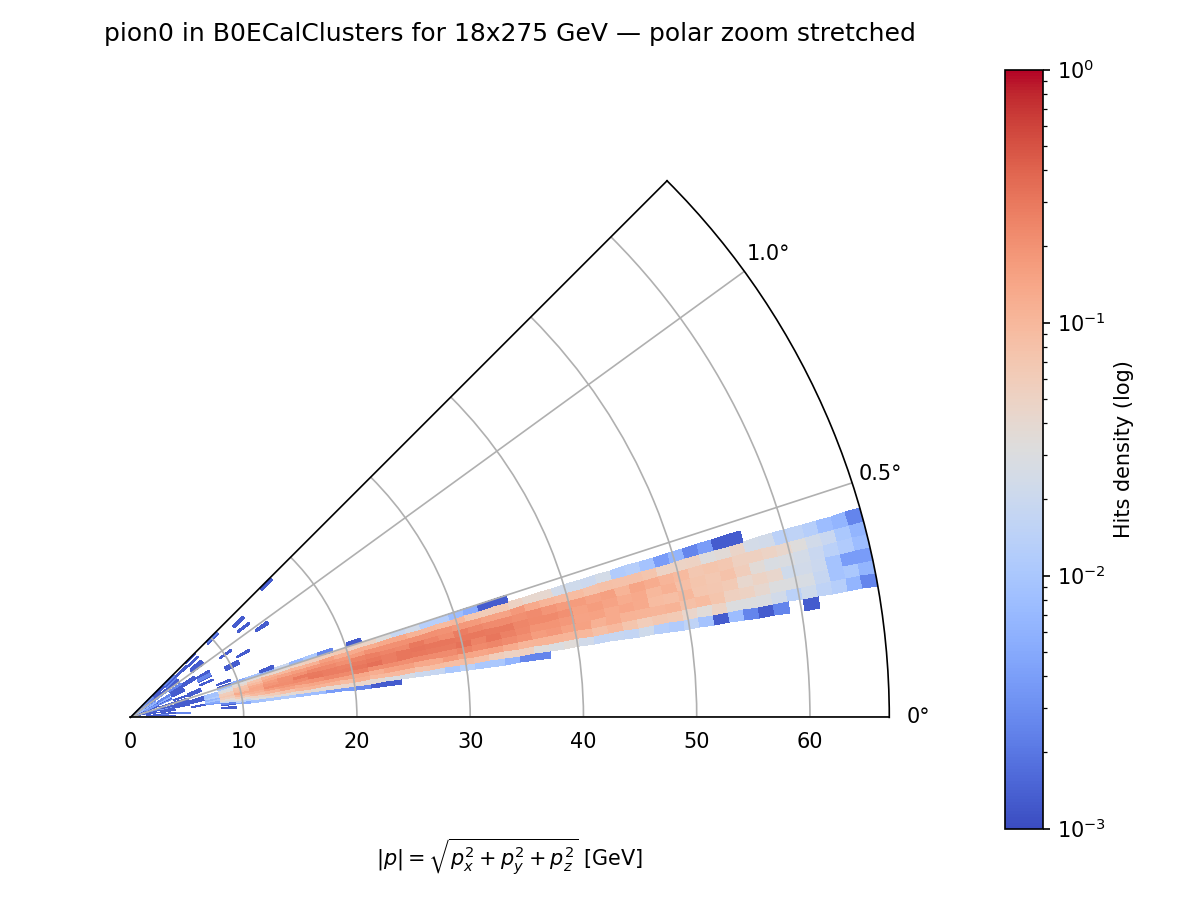 |
π⁰ in ECal Far Forward ZDC:
| Energy Configuration | Polar Acceptance |
|---|---|
| 5×41 GeV | 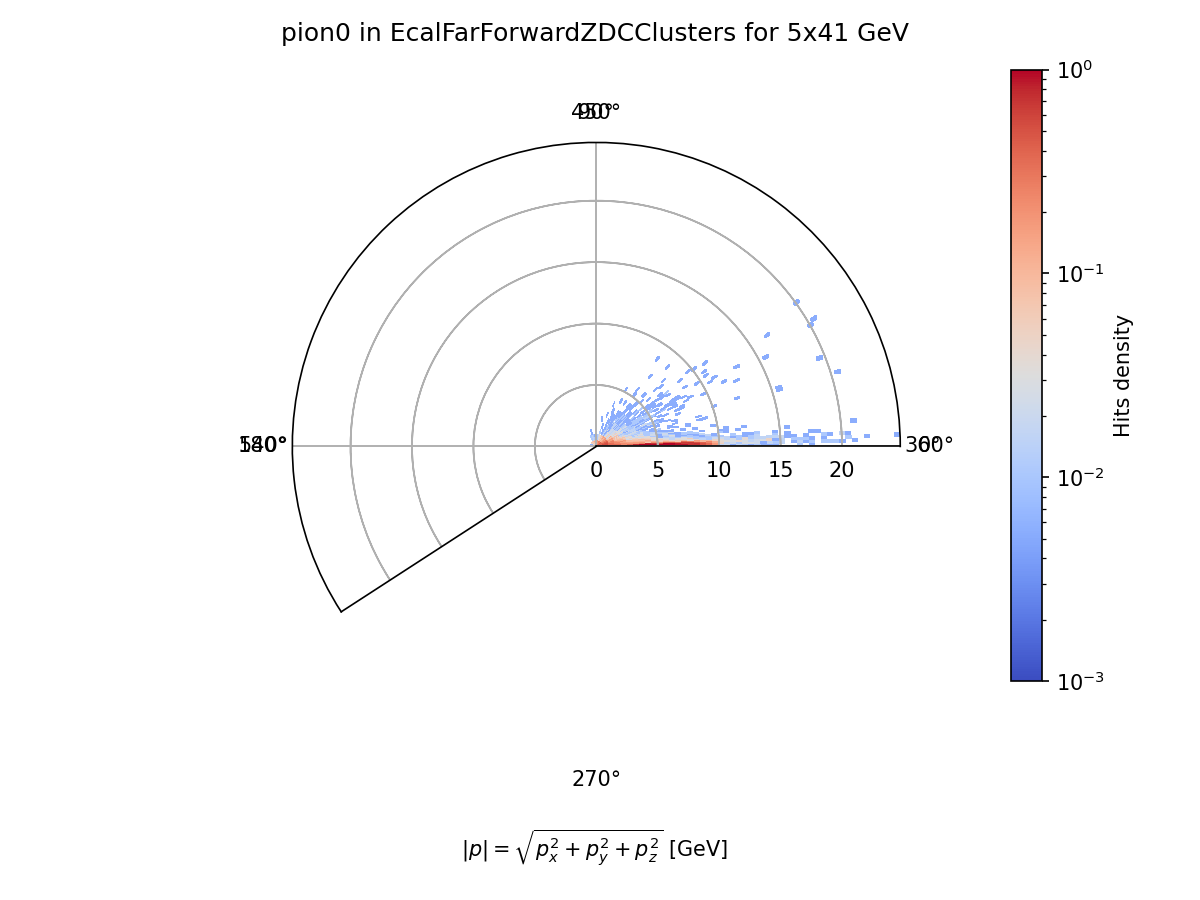 |
π⁰ in HCal Far Forward ZDC:
| Energy Configuration | Polar Acceptance |
|---|---|
| 5×41 GeV | 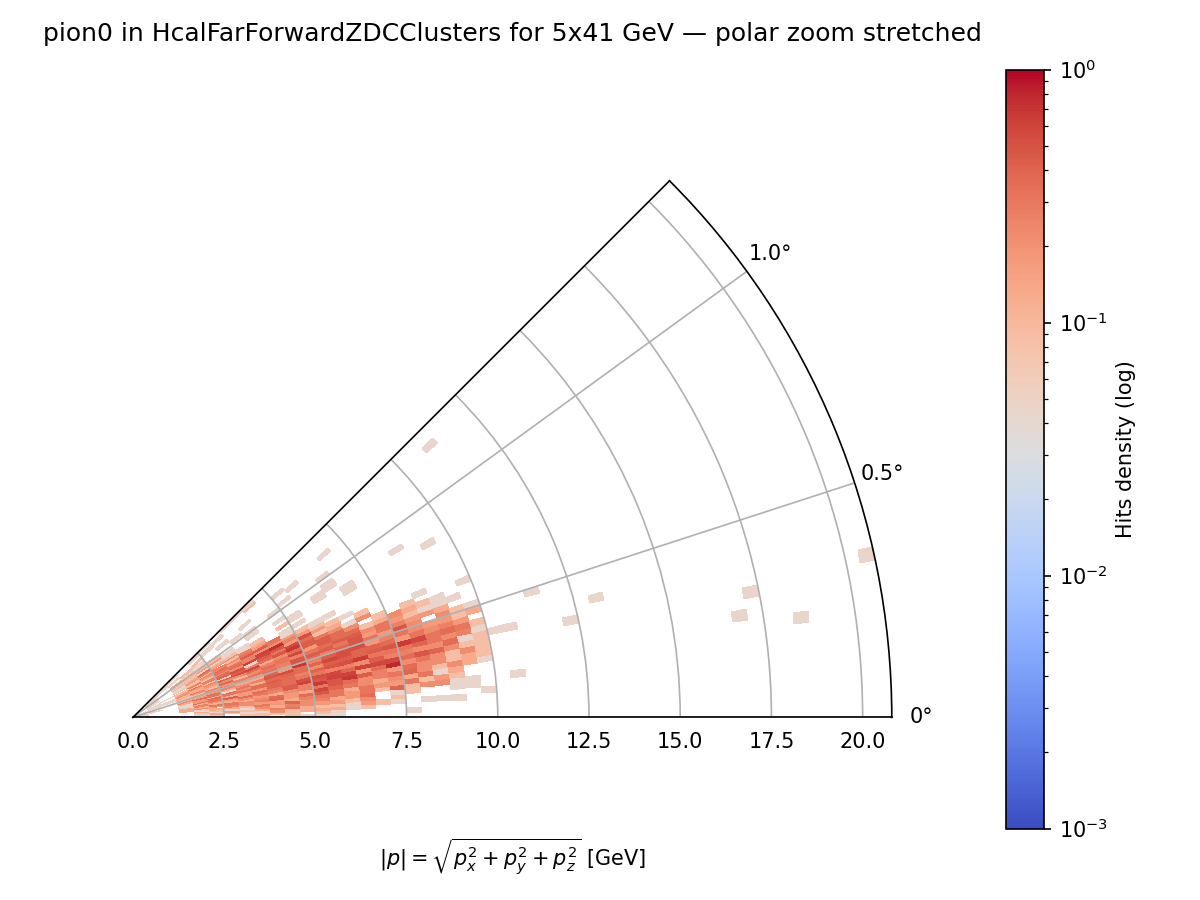 |
| 10×100 GeV | 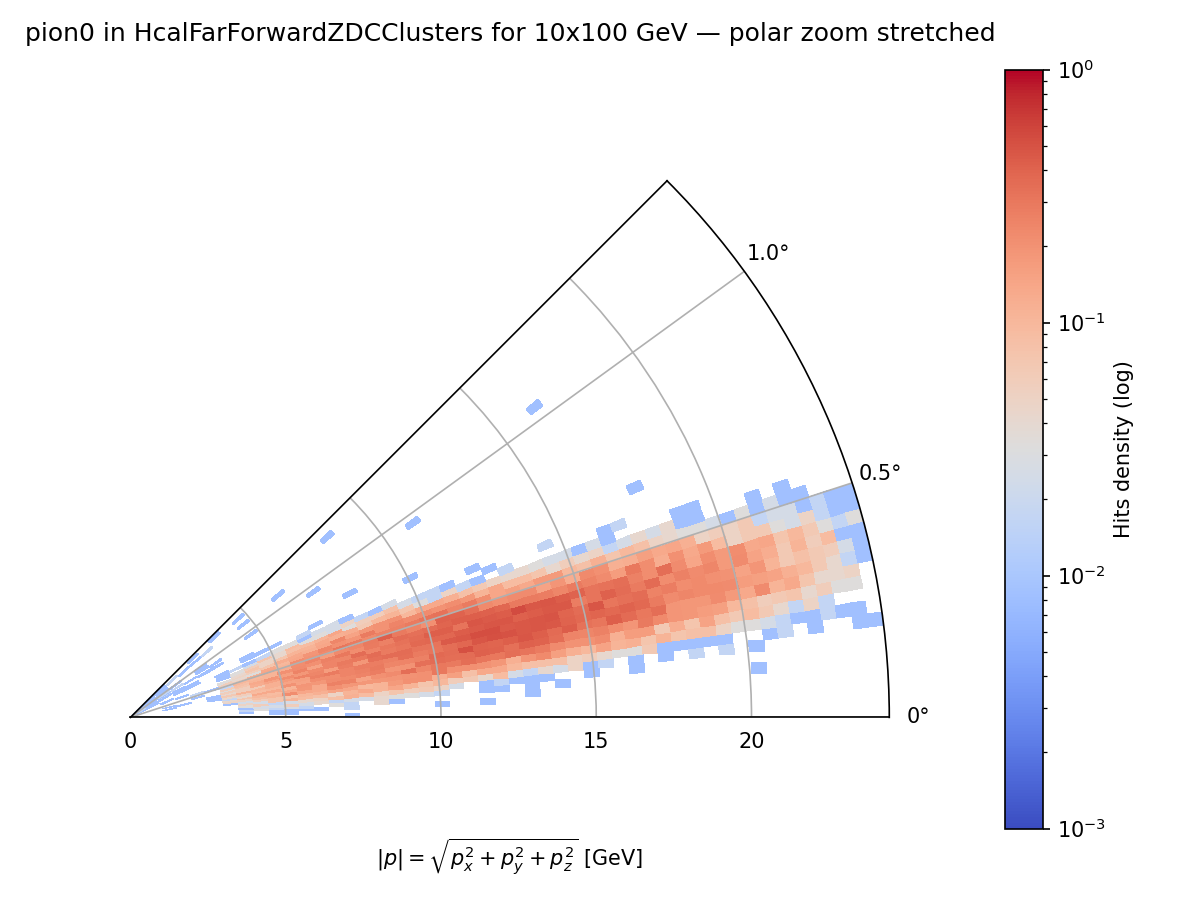 |
| 18×275 GeV | 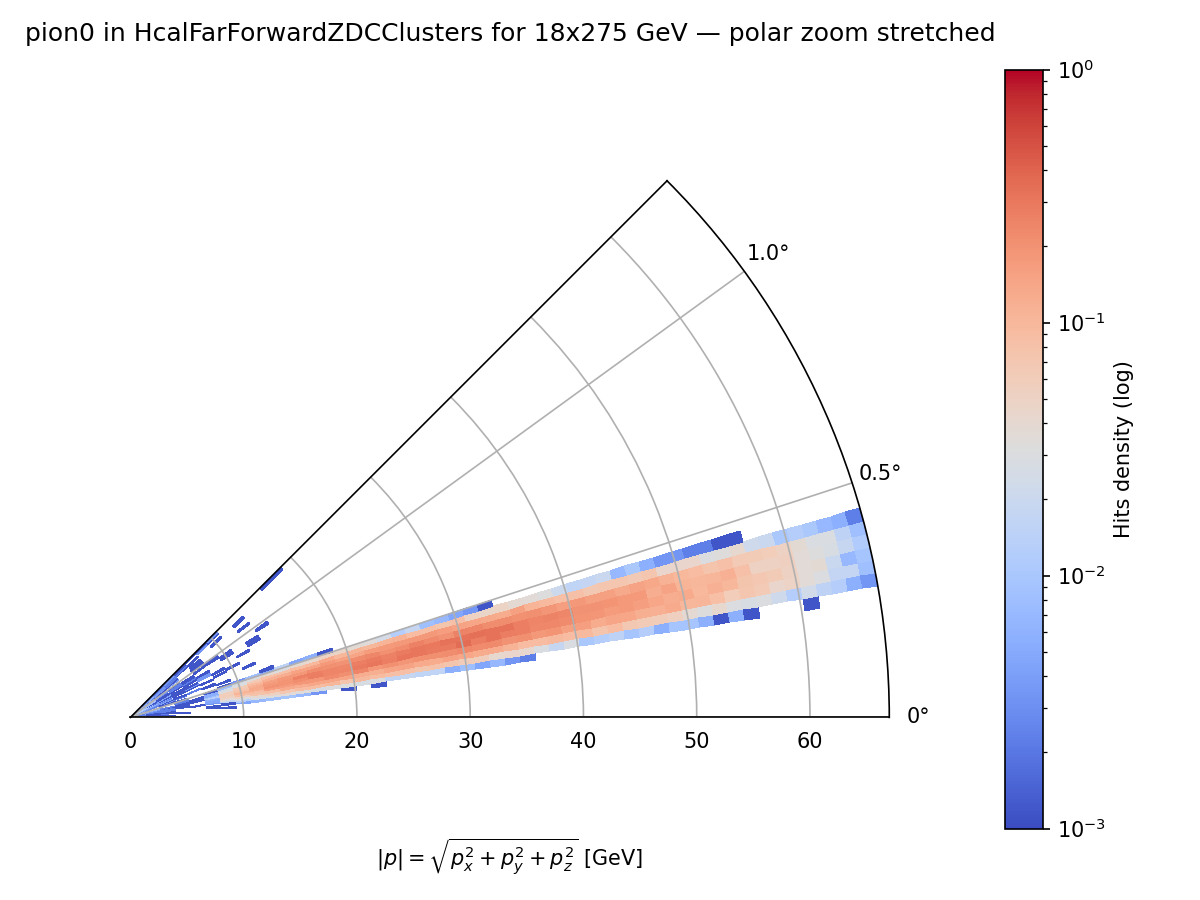 |
